If you haven’t read the January 16-18 blog about our visits to Munich and Ulm, you might want to read that first. In the end, the order is immaterial. Just sayin’ that there’s another blog about Munich.
Our main goal (we had a late start) was to get to the glockenspiel before noon to see the re-enactment of a Medieval tournament. It does this at 11:00 a.m. and noon. We had time to visit St. Peter’s church on the way. Actually, we didn’t really visit it so much as utilize the tower for a view. Michael decided to hang out down below while I climbed the 306 steps to the top. The view was quite nice.
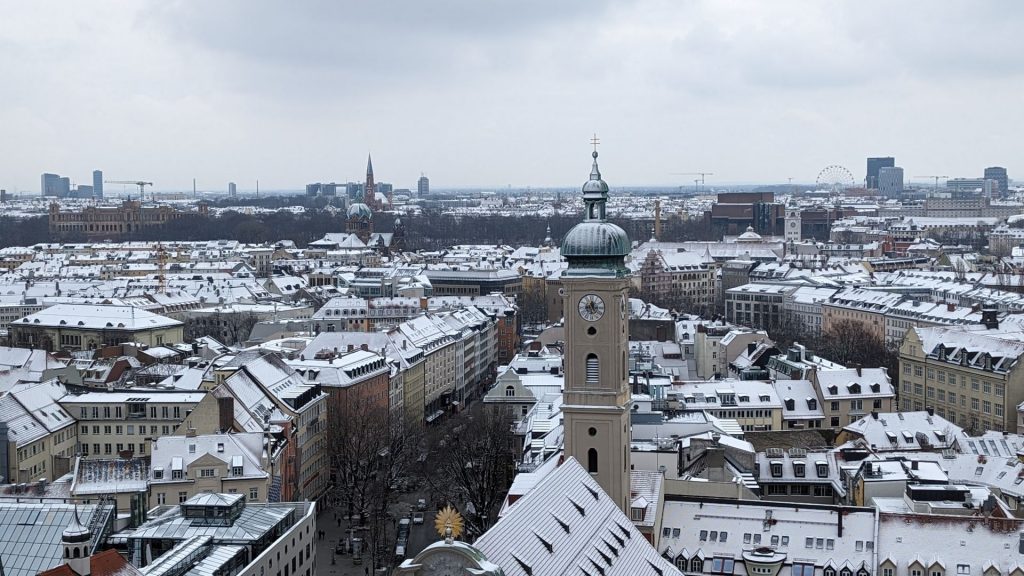
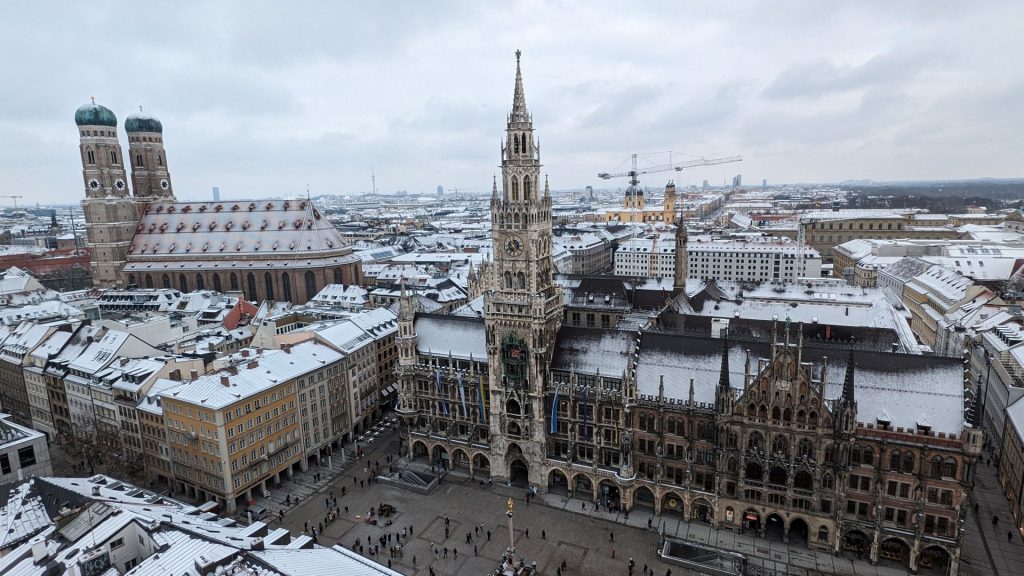
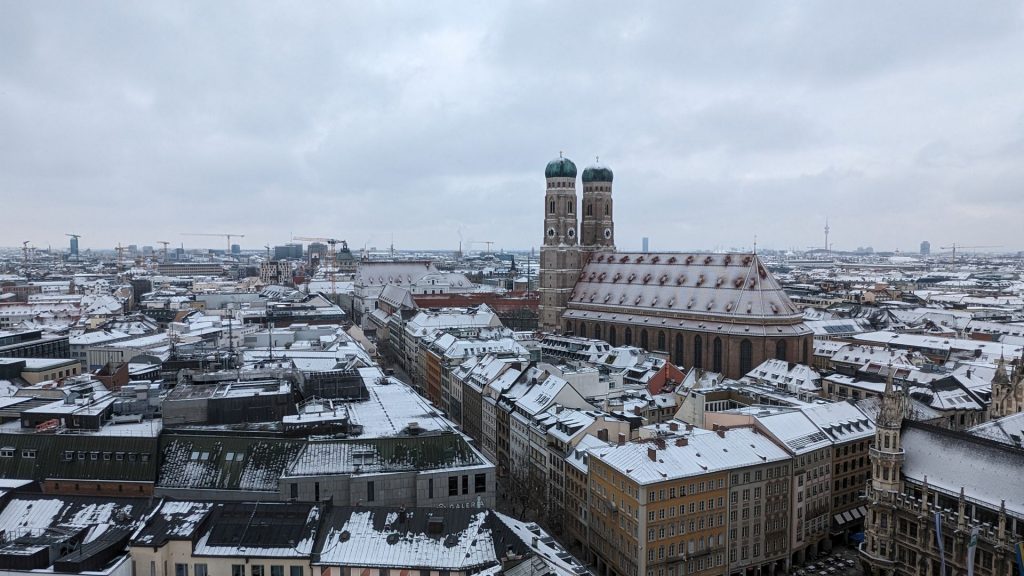
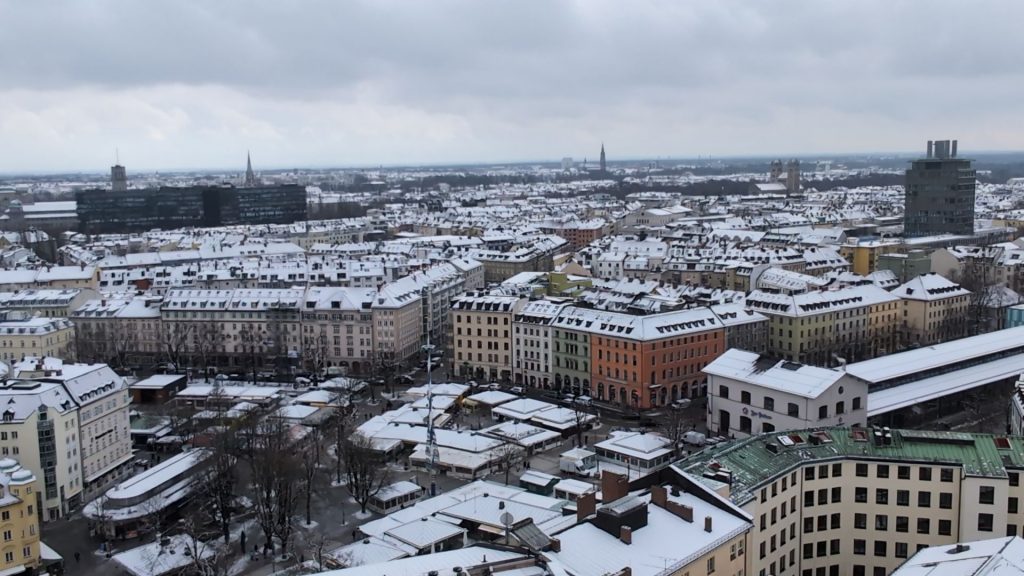
Everything that happened next was all about the glockenspiel. I took a video with my phone and grabbed screenshots, so the pics aren’t that great, but I hope it gives you an idea of the “show.”
First, it just shows people and knights hanging out. There is a bit of jousting, but no one is hurt. Then one of the knights gets the other one with the joust. When that happened, Michael said with a dramatic flair, “Oh no, he got him!”
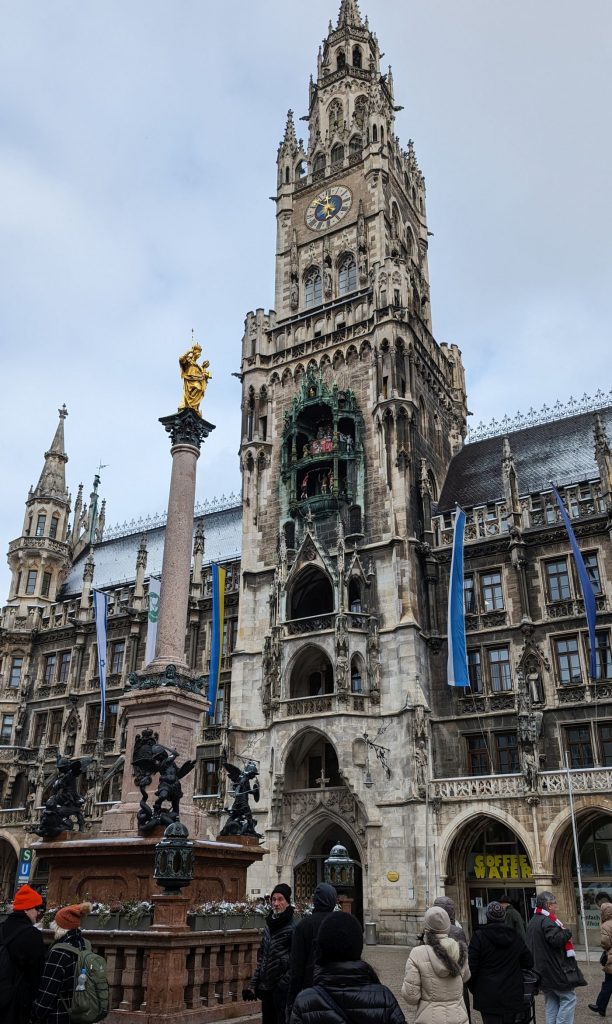
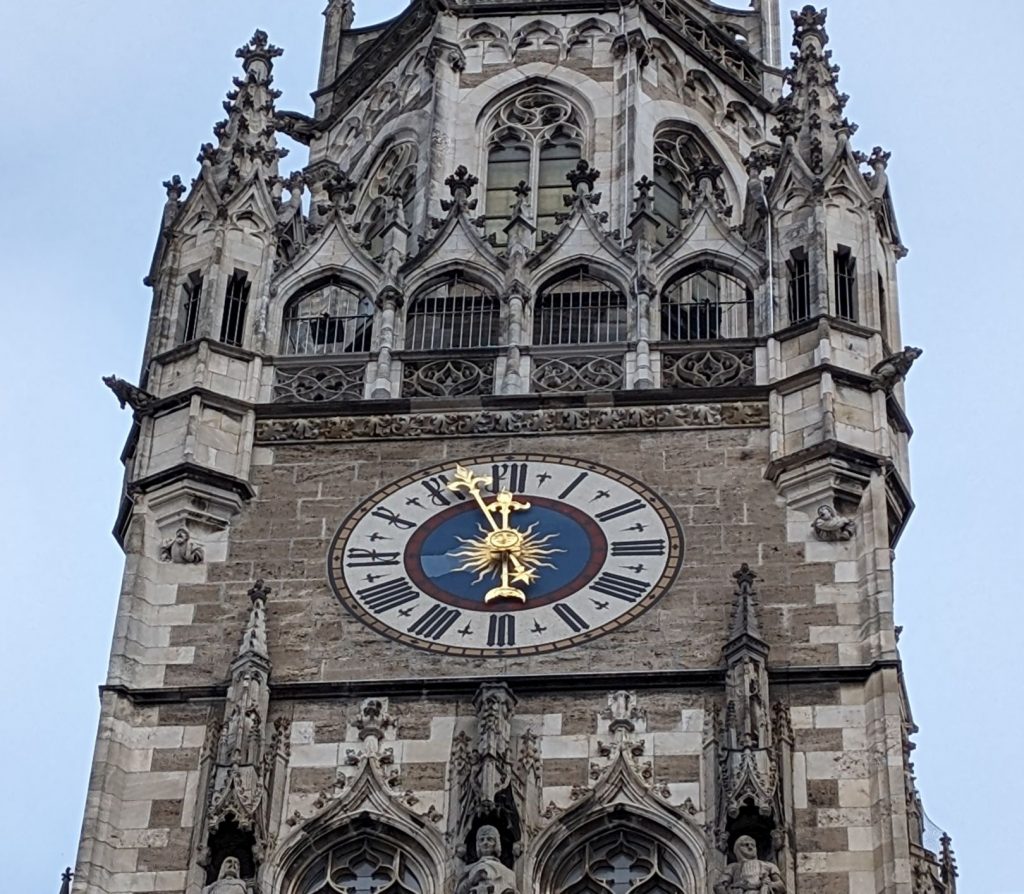
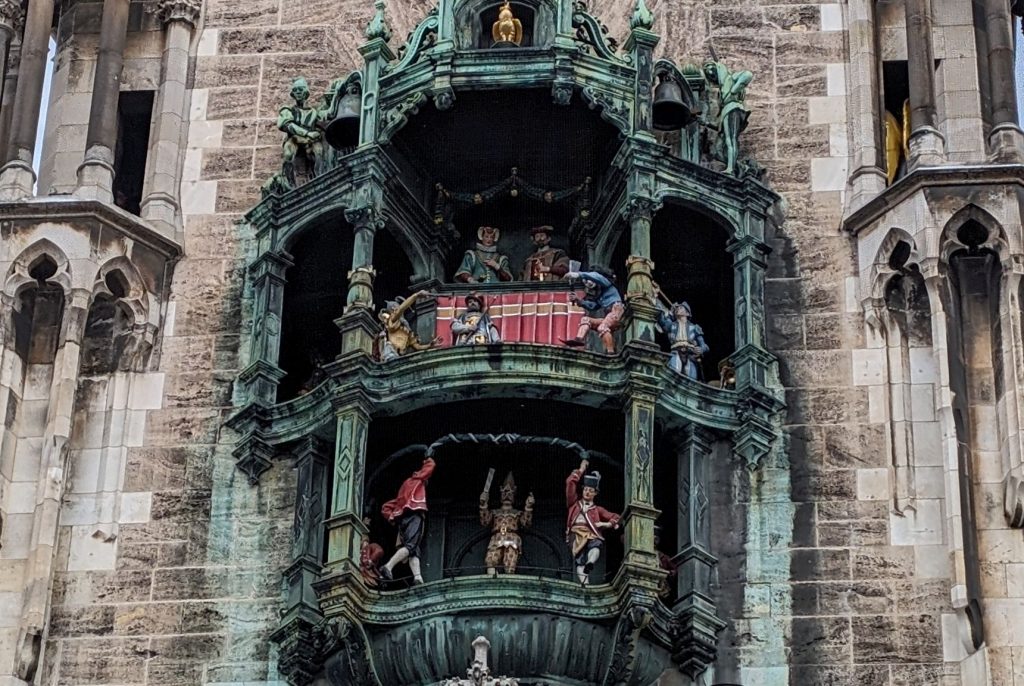
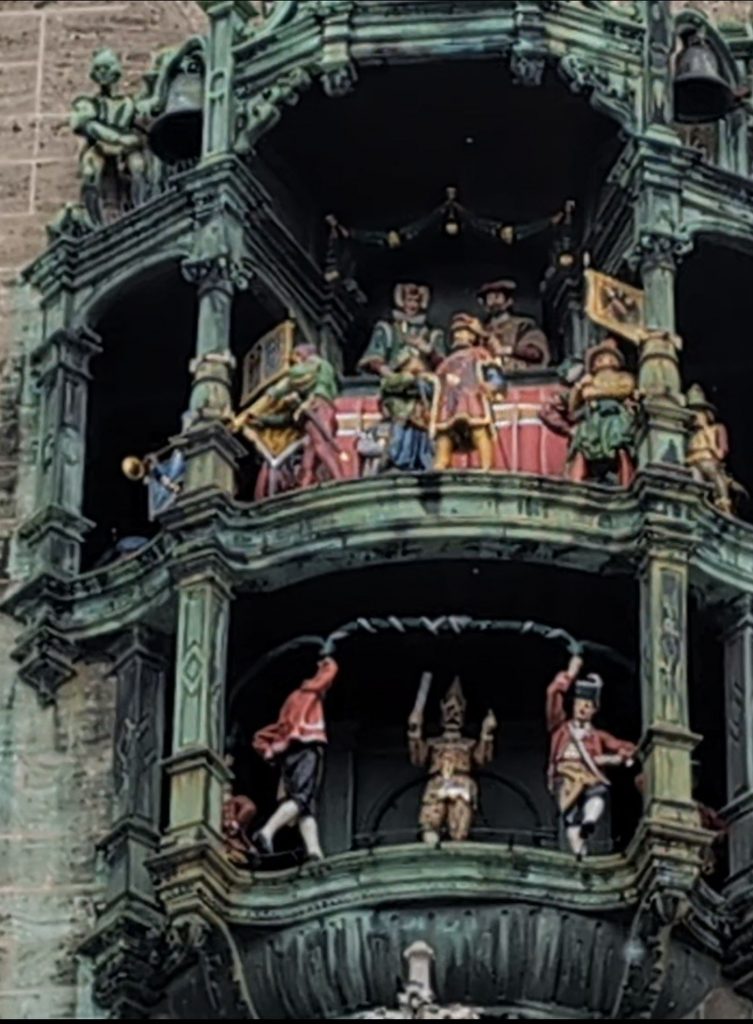
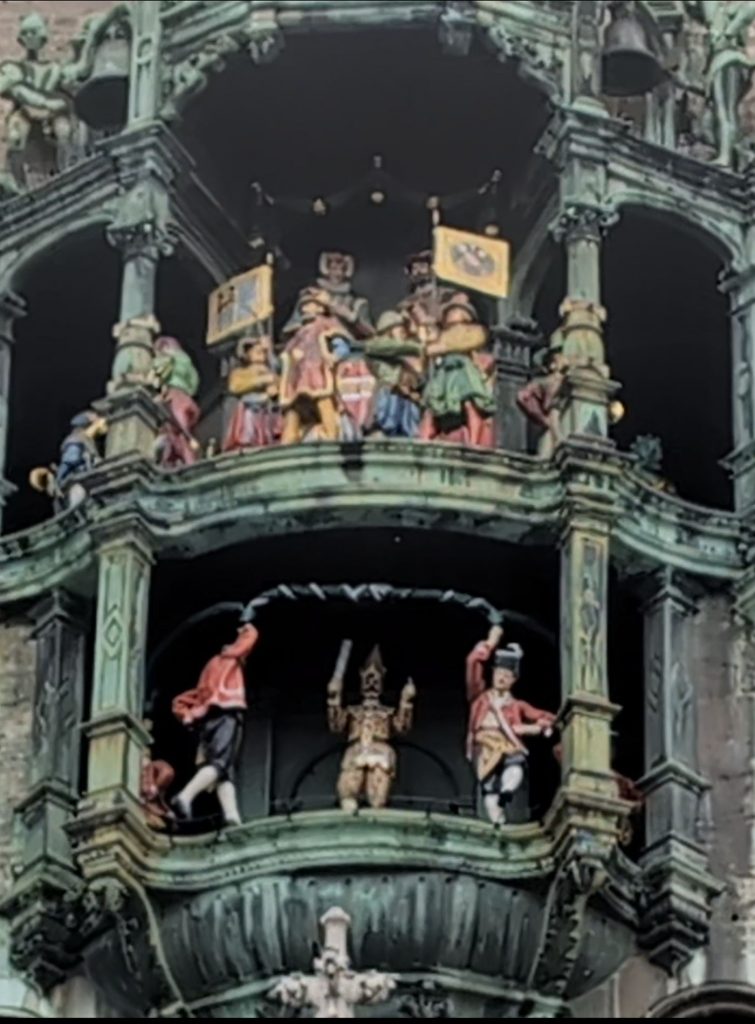
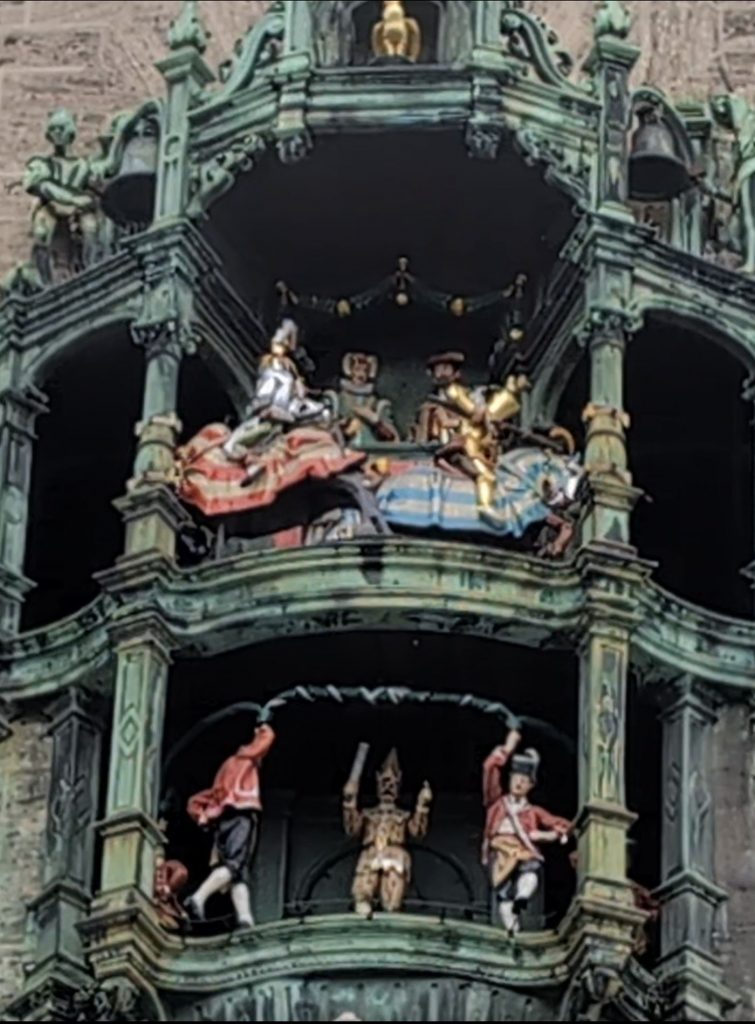
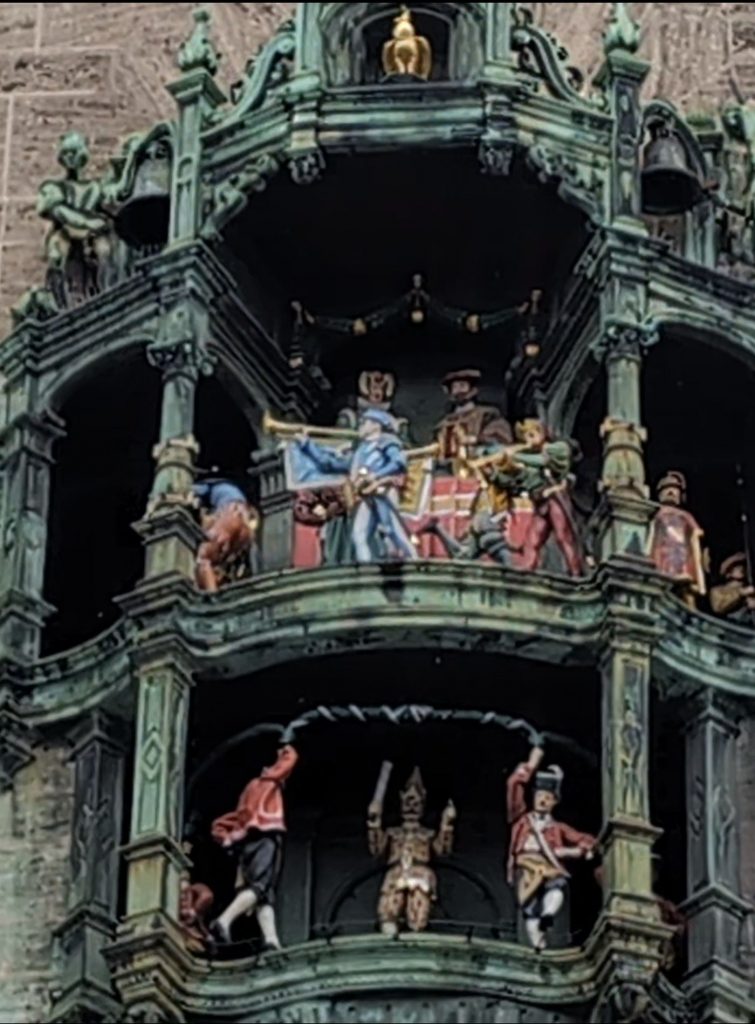
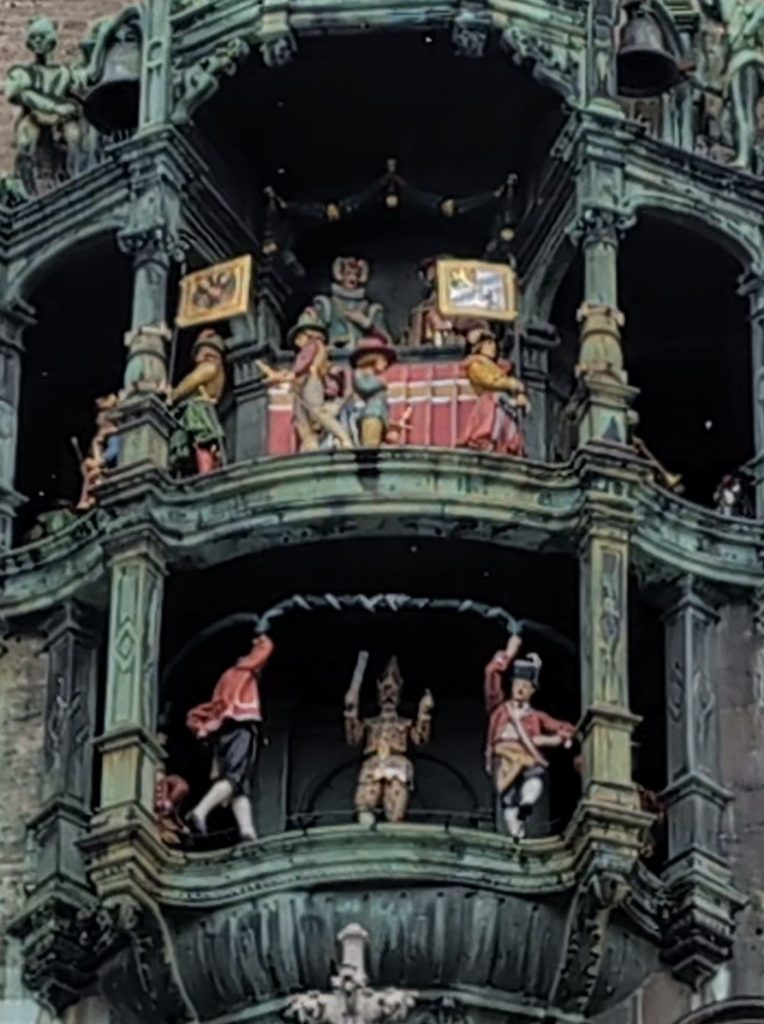
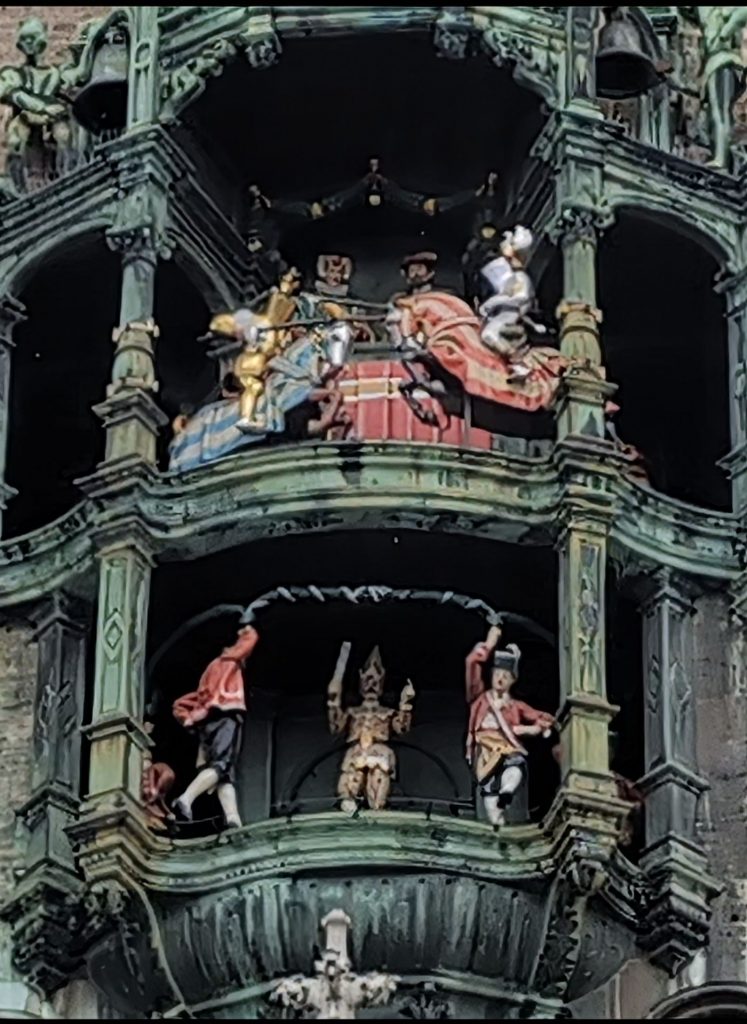
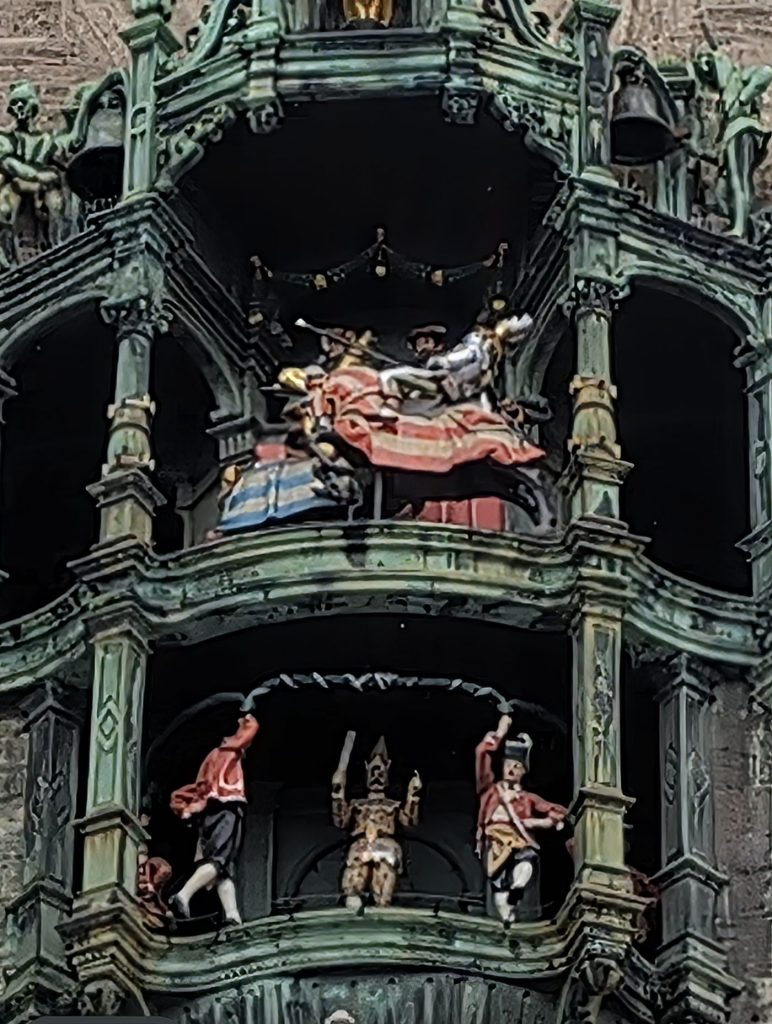
The top part stopped spinning and the bottom part started. The dancers in the bottom part just went in circles the entire time, so we don’t have any additional shots of them doing so.
Our next stop was a toy museum. It is exactly what you would expect it to be: toys from long ago to “less long ago.” We saw some toys that we recognized and others that we didn’t. Some of them are older than we are. Here are some pictures for your viewing pleasure. Maybe they will take you down memory lane . . . maybe not!
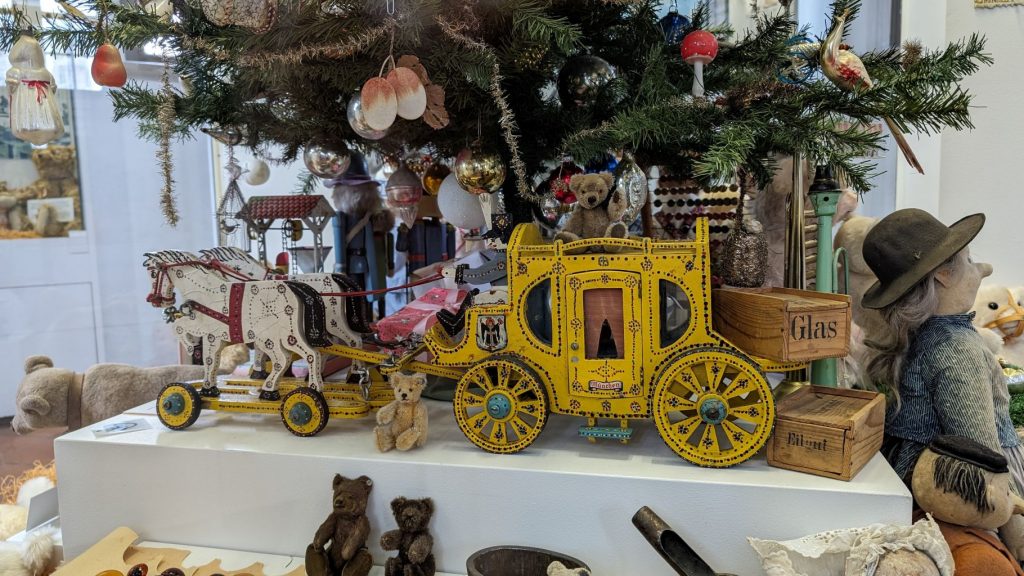
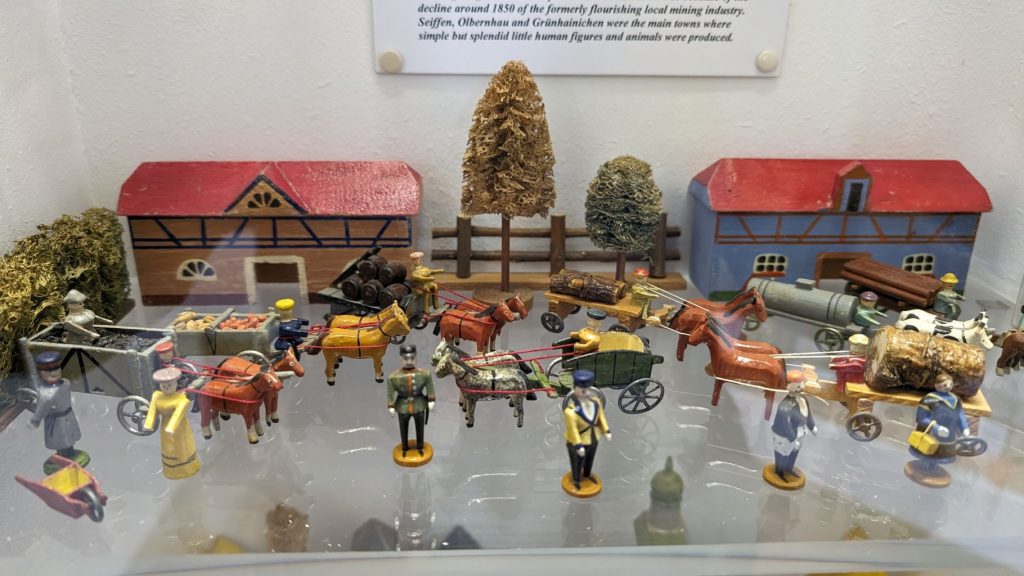
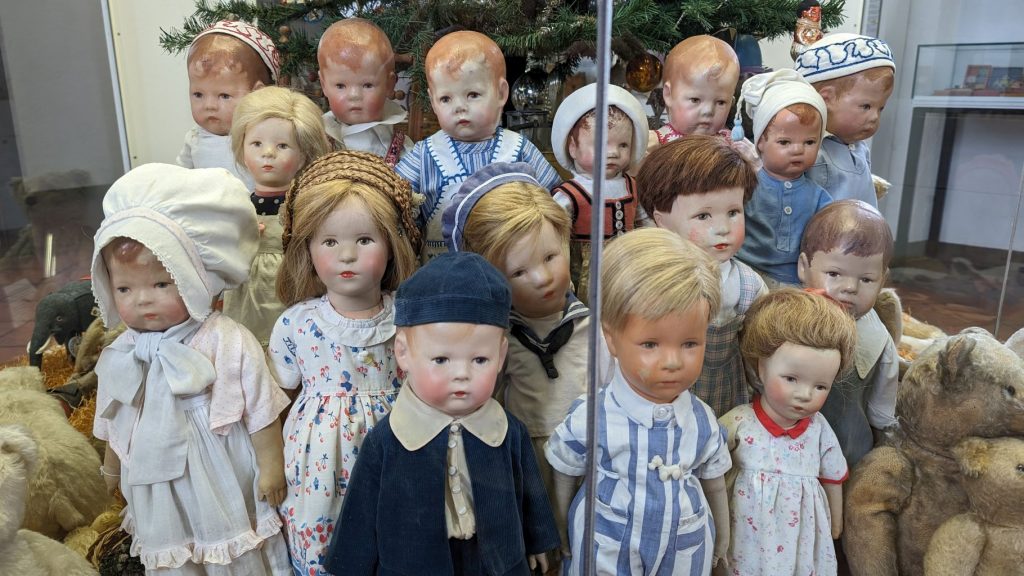
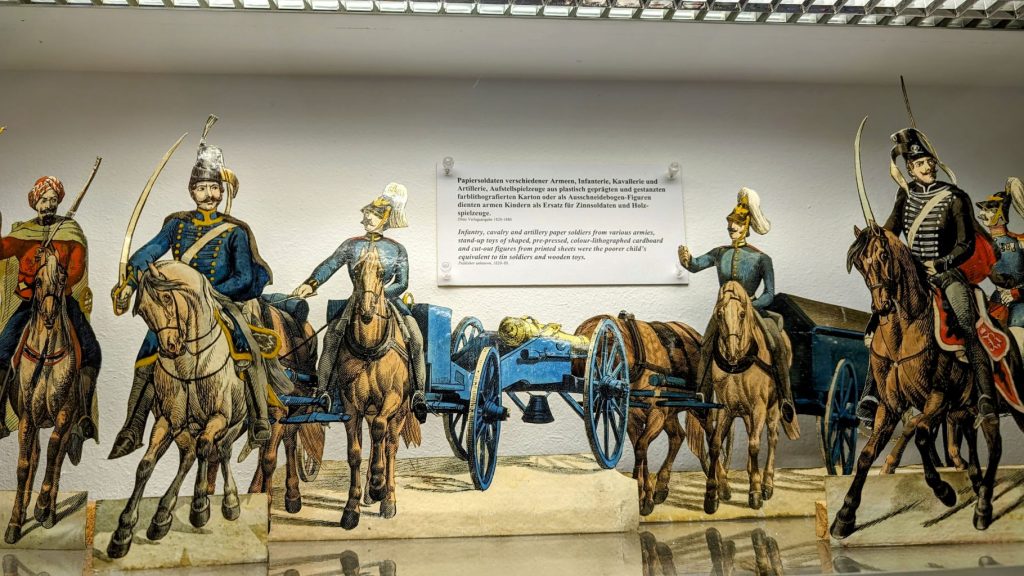
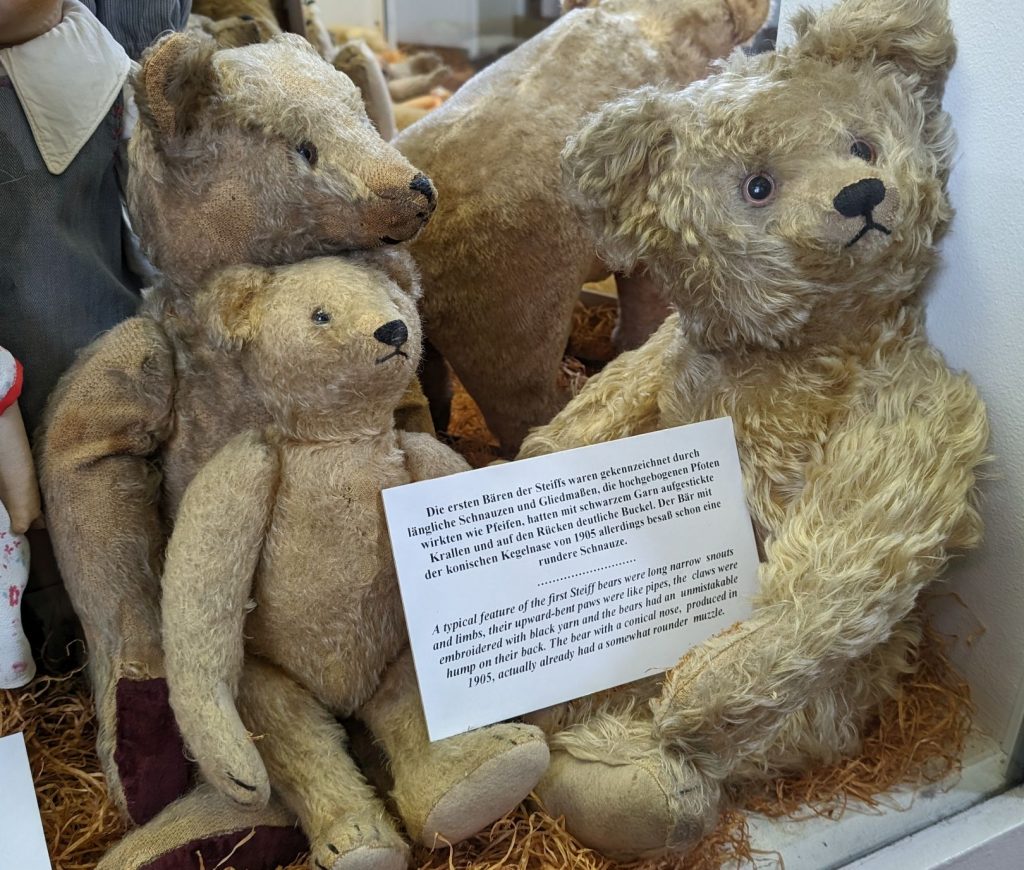
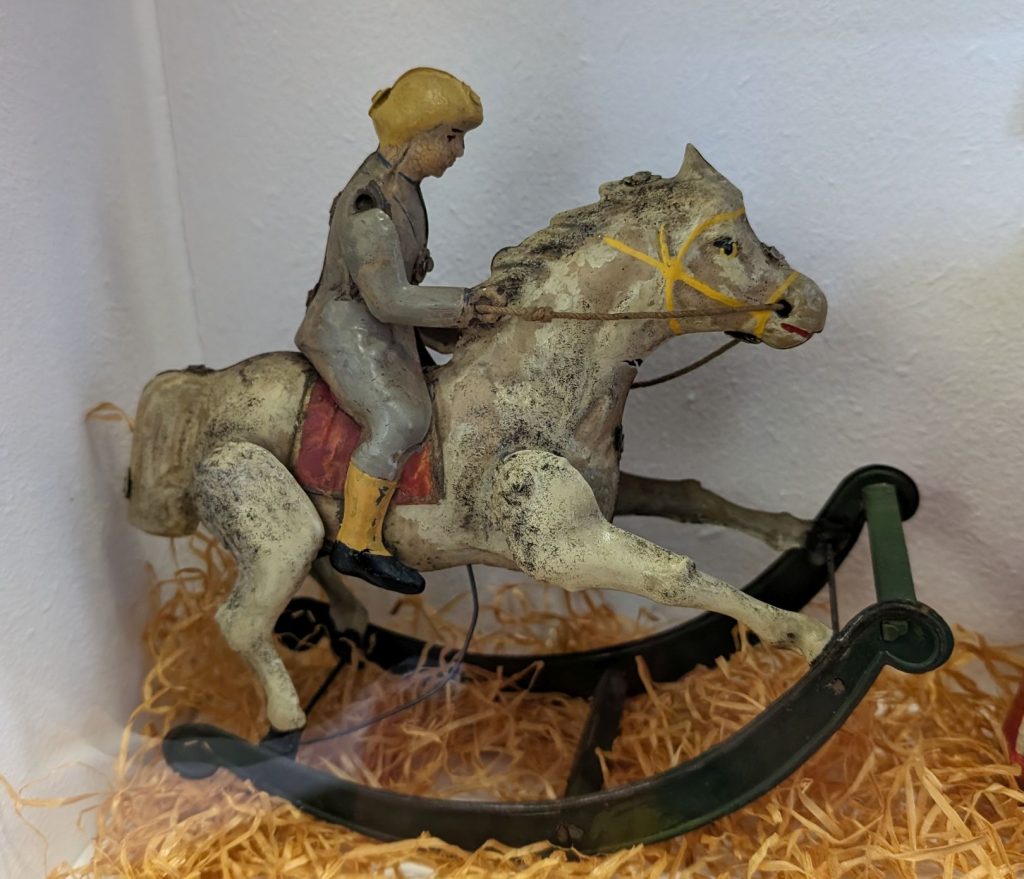
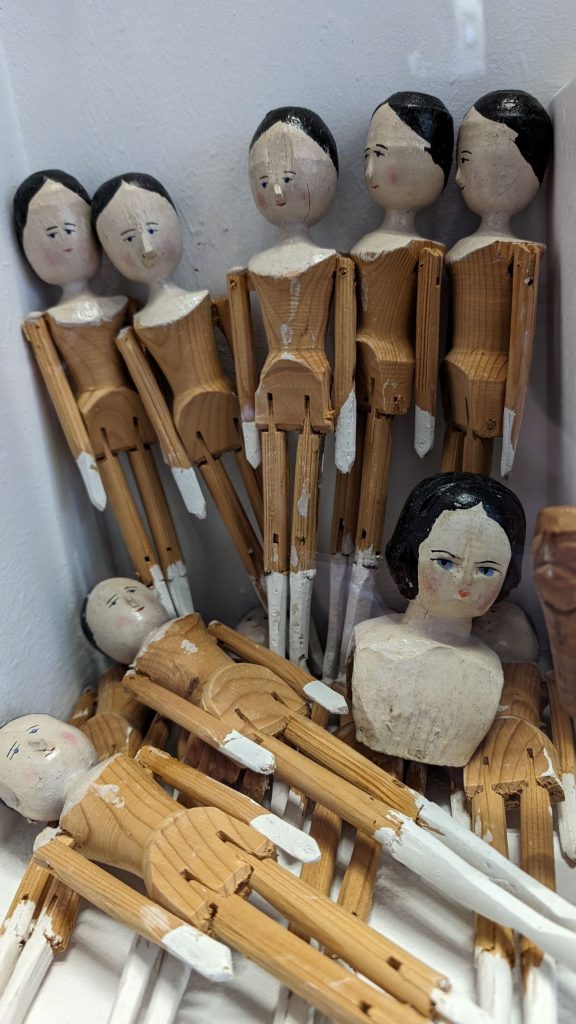
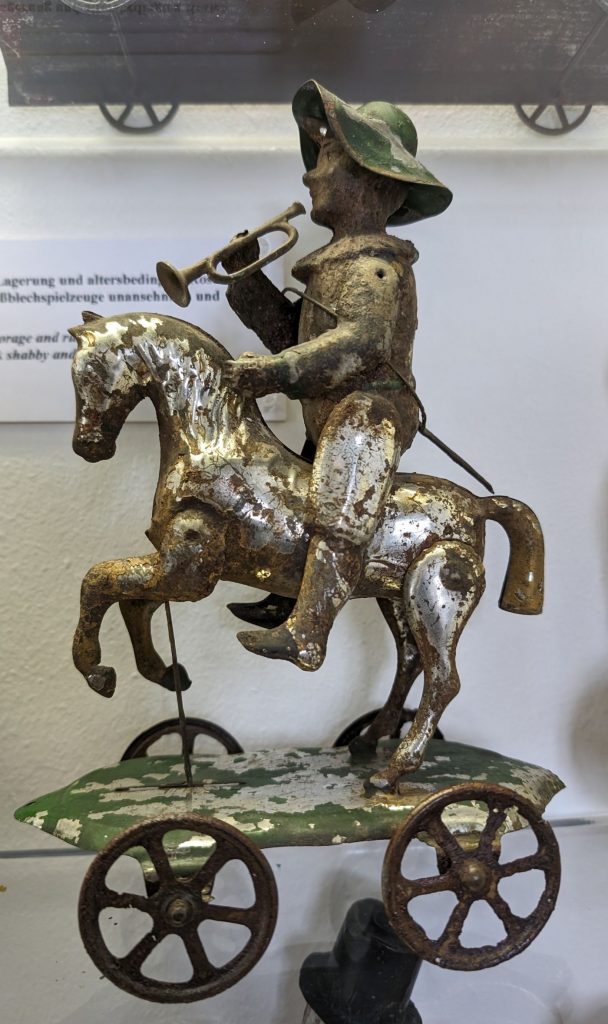
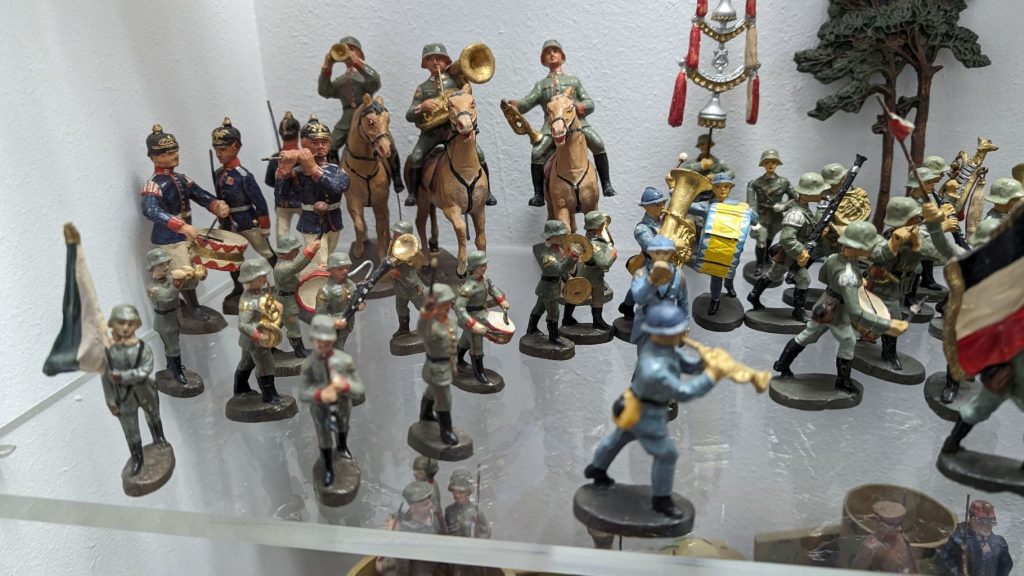
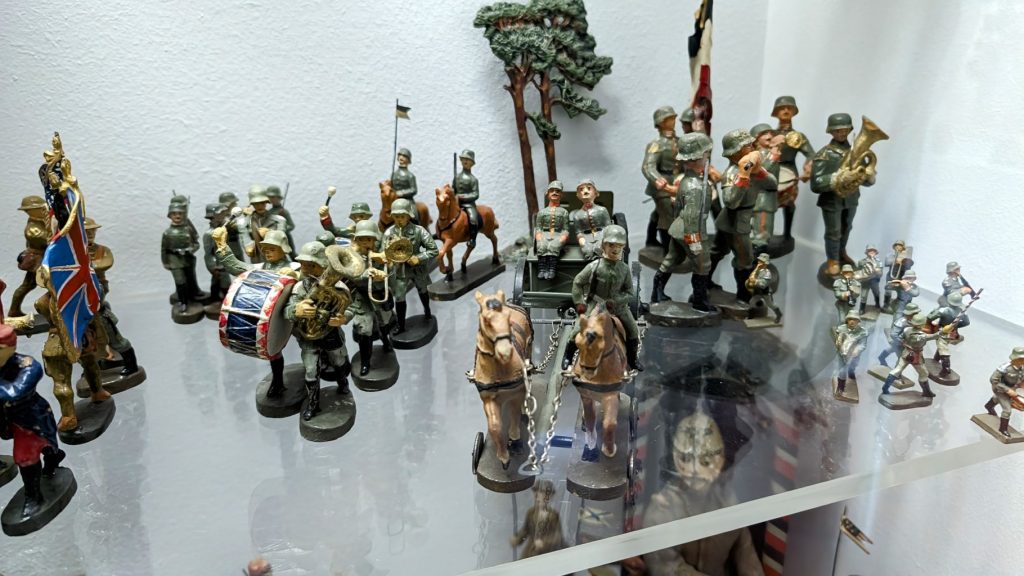
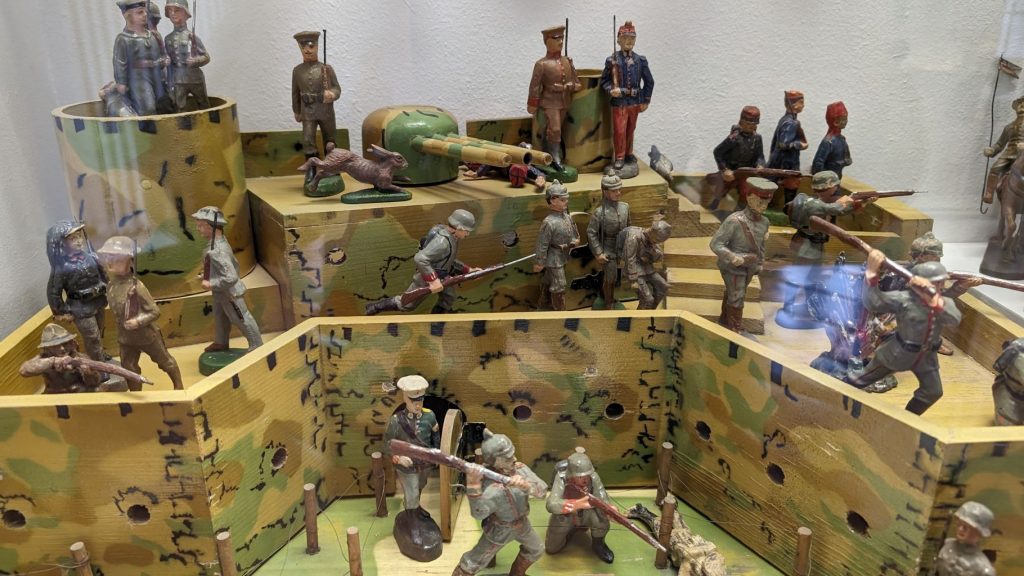
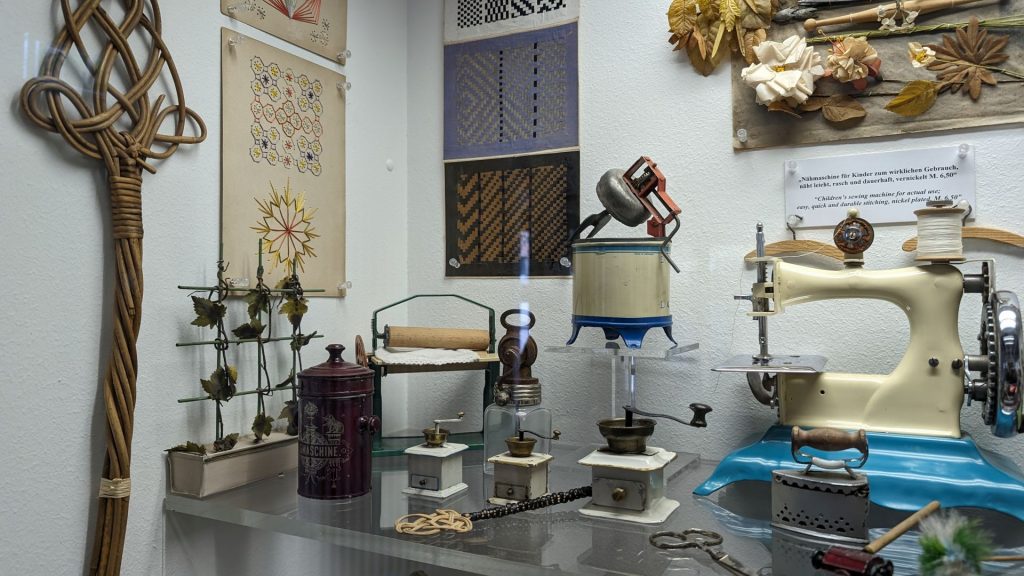
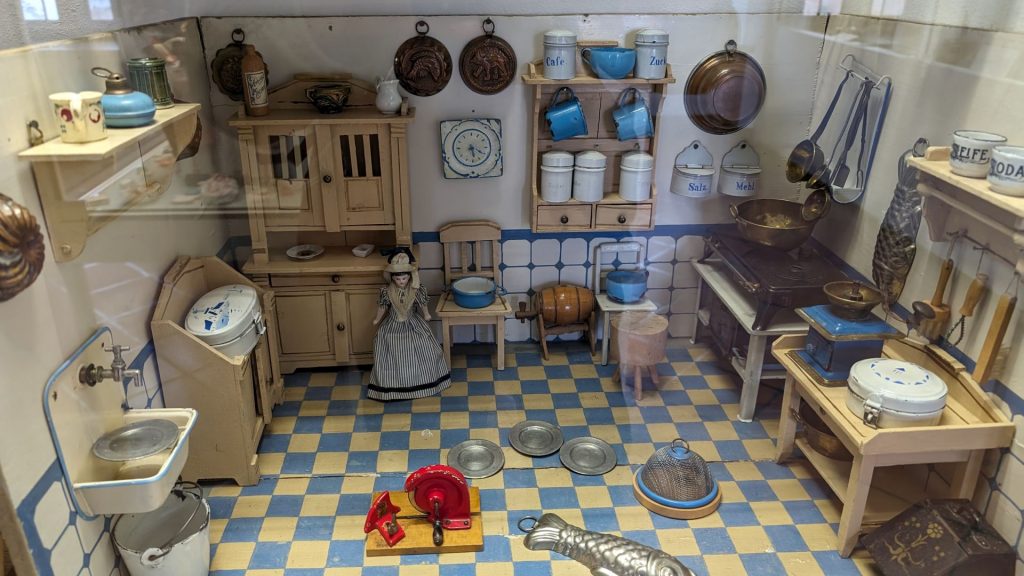
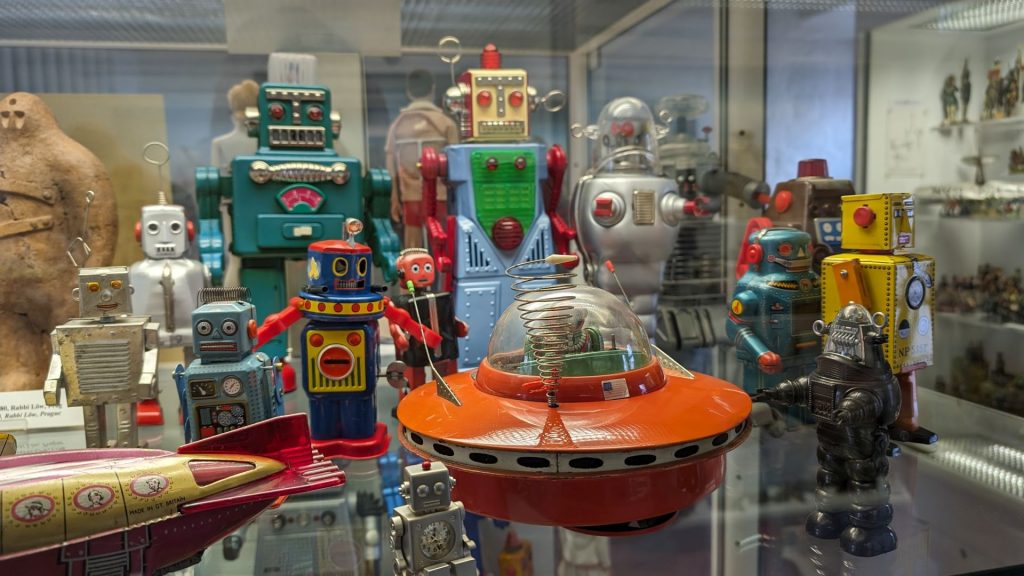
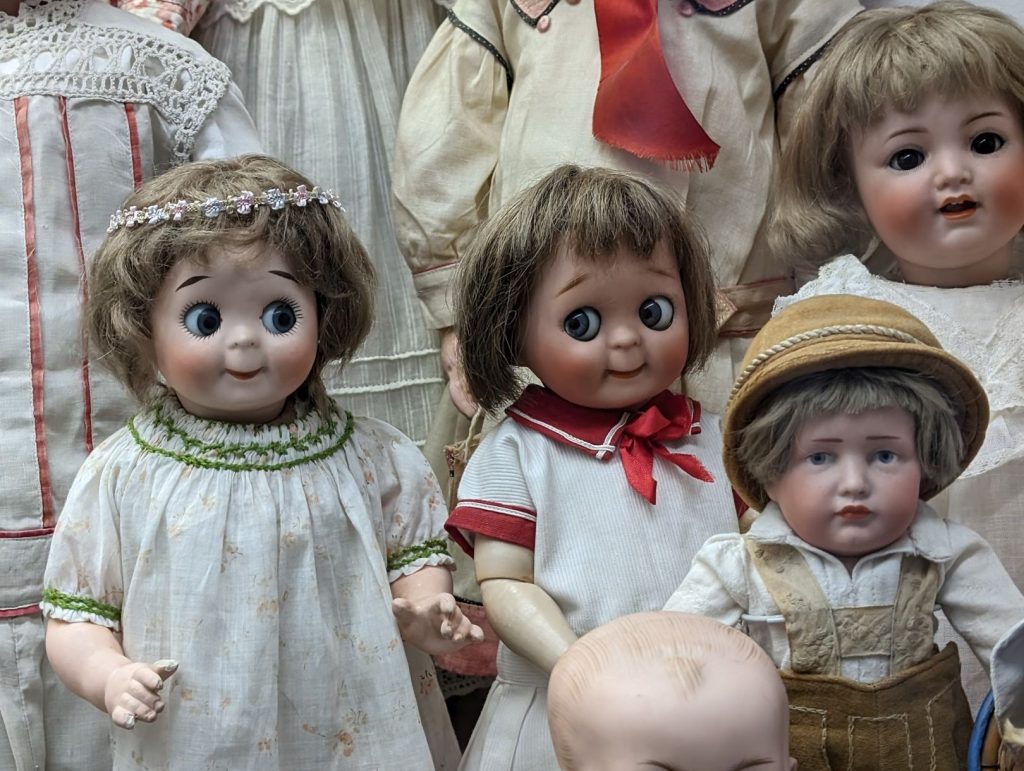
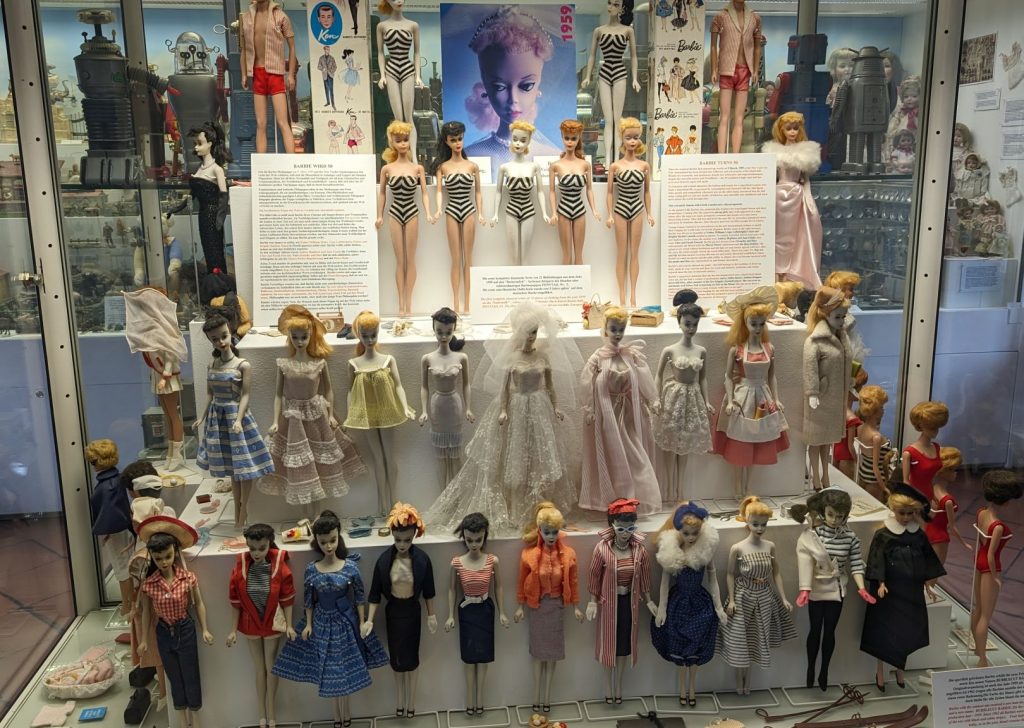
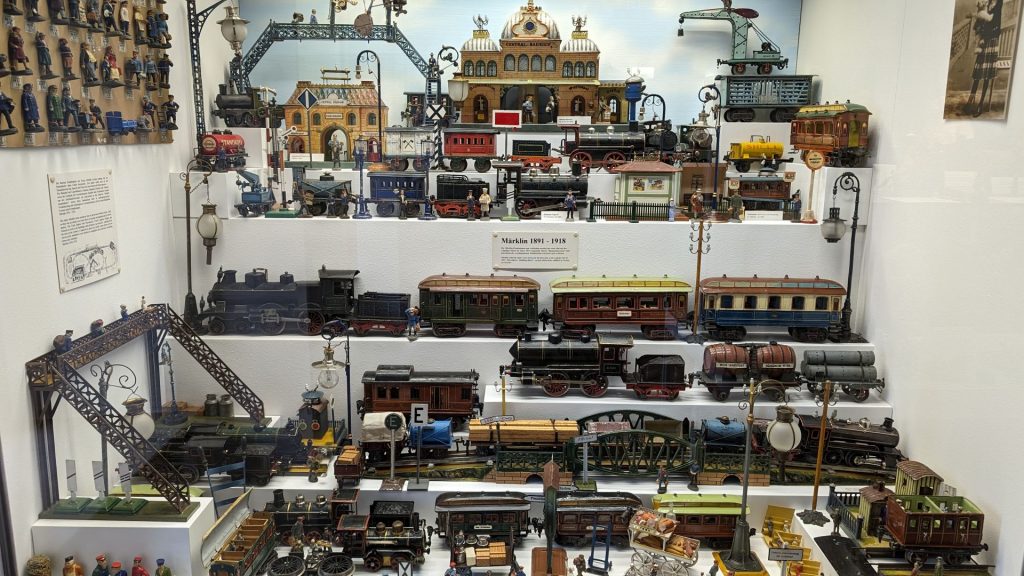
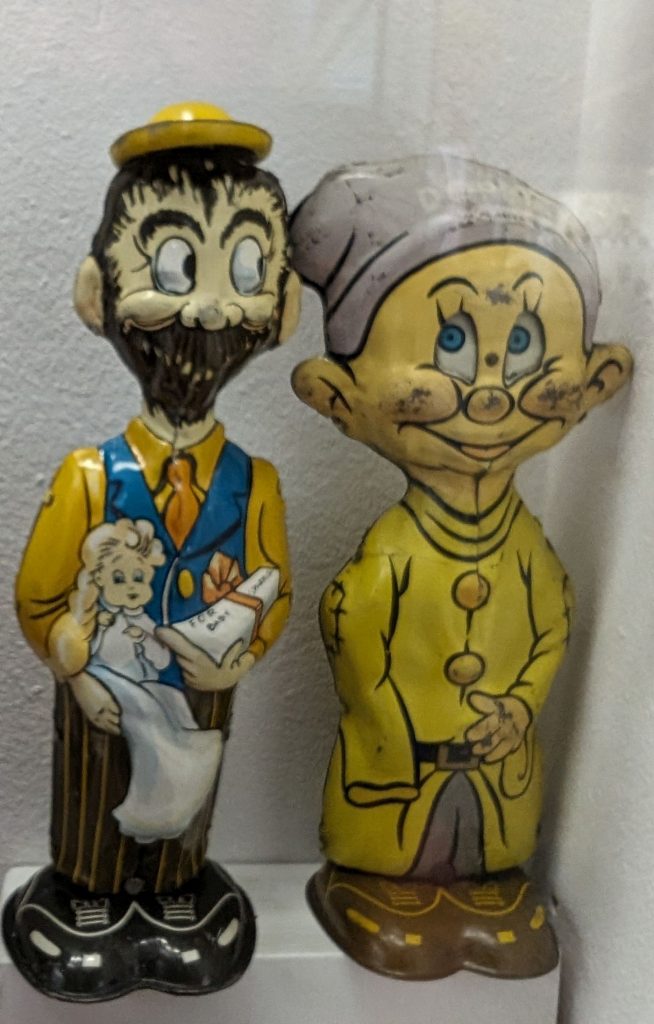
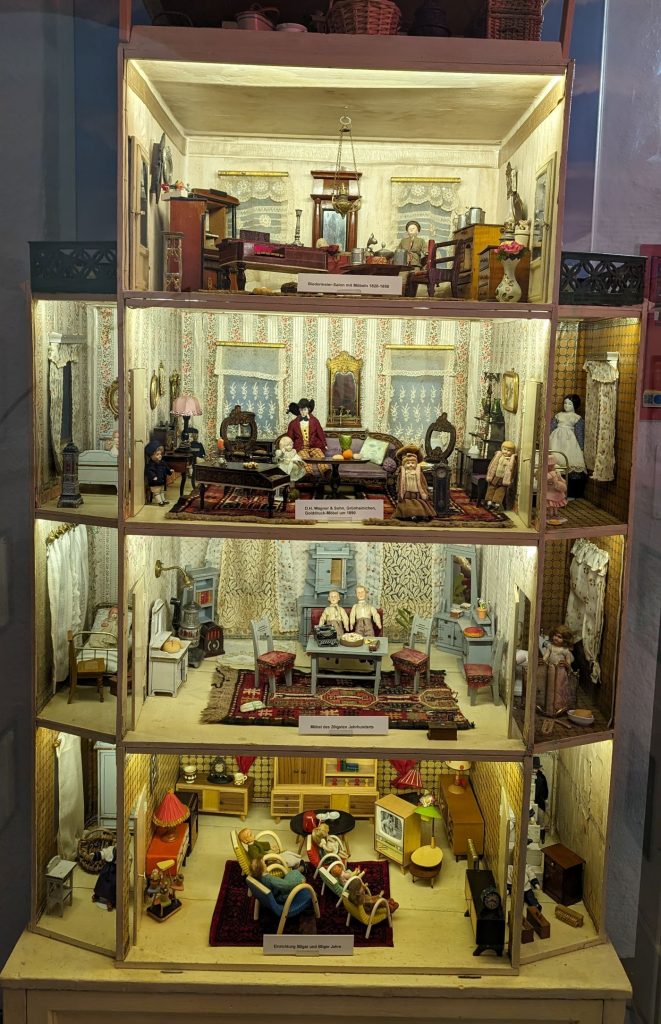
We had one more stop to make before we took the train to Lucerne. That stop was the Munich Residence, or Royal Palace and Museum.
Between 1508 and 1918 the Residence in Munich was the principal palace and seat of government of Bavarian rulers from the House of Wittelsbach. During this 400-year period, the Residence developed into one of the largest and most lavishly appointed palace complexes in Europe.
Since 1920 the Residence has been open to the public as a museum. Currently 130 rooms are on display, their styles spanning the Renaissance, Early Baroque, Rococo and Neoclassical periods. These rooms, plus the many art treasures in the Residence, make this one of the most important palace museums in Europe
Following severe damage during the Second World War, the palace buildings were rebuilt after 1945 and as far as possible, the surviving artworks and furniture put back in their original position
We didn’t have time to see the entire palace, but what we saw (a lot!) was fantastic. We are happy to share the pictures.
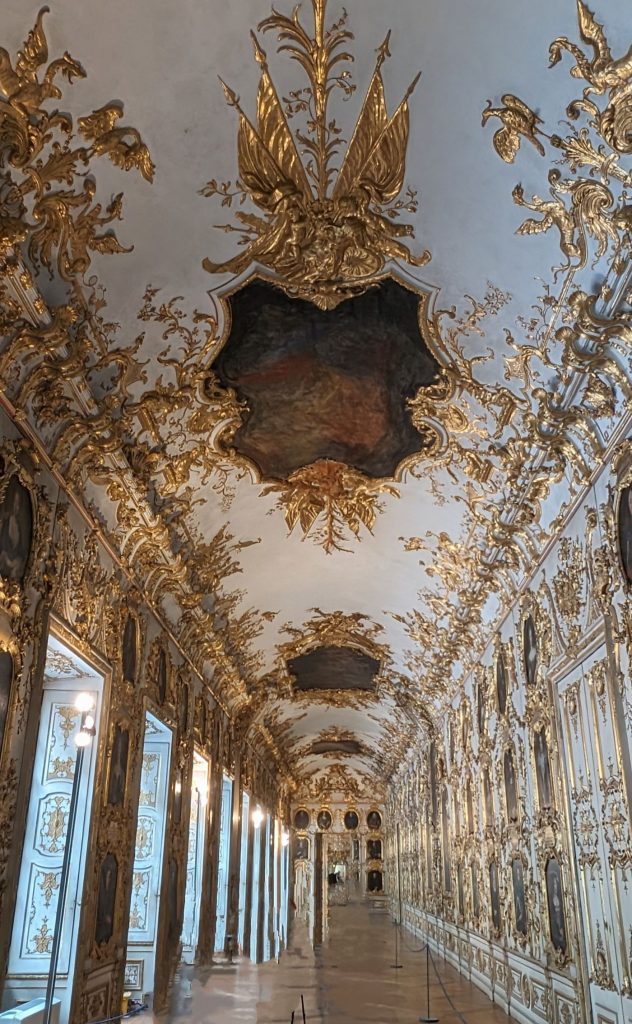
It sort of looks like the gold is growing, like ivory.
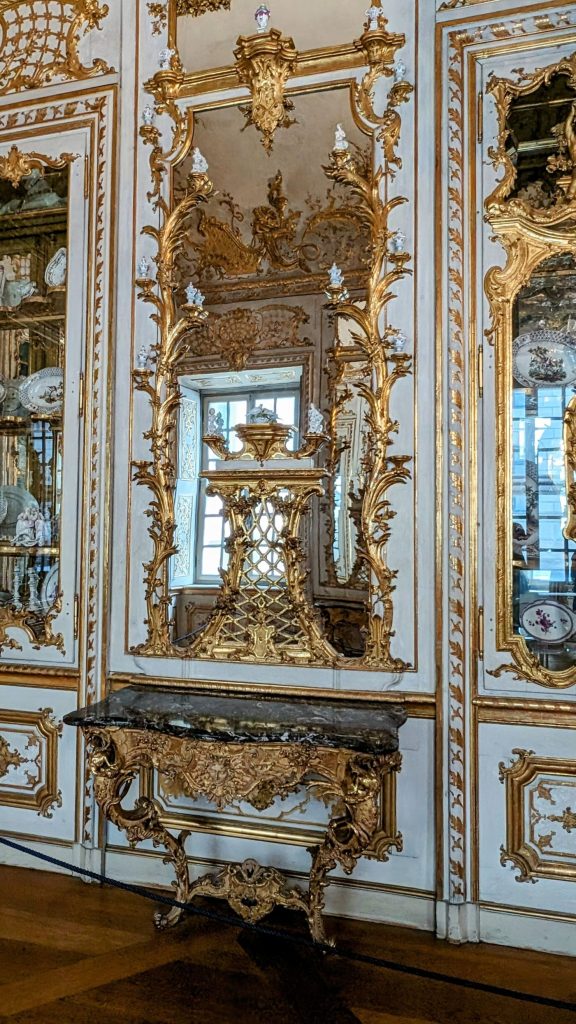
These guys in the next two photos: I don’t know who they are, I just love their facial expressions. I mean, did they want them captured for all eternity this way? Maybe so.
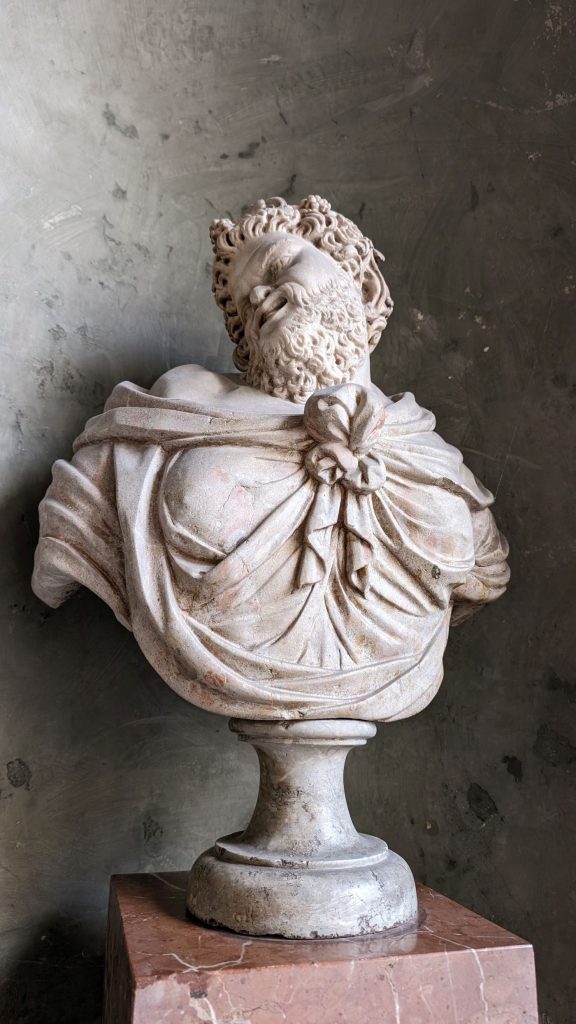
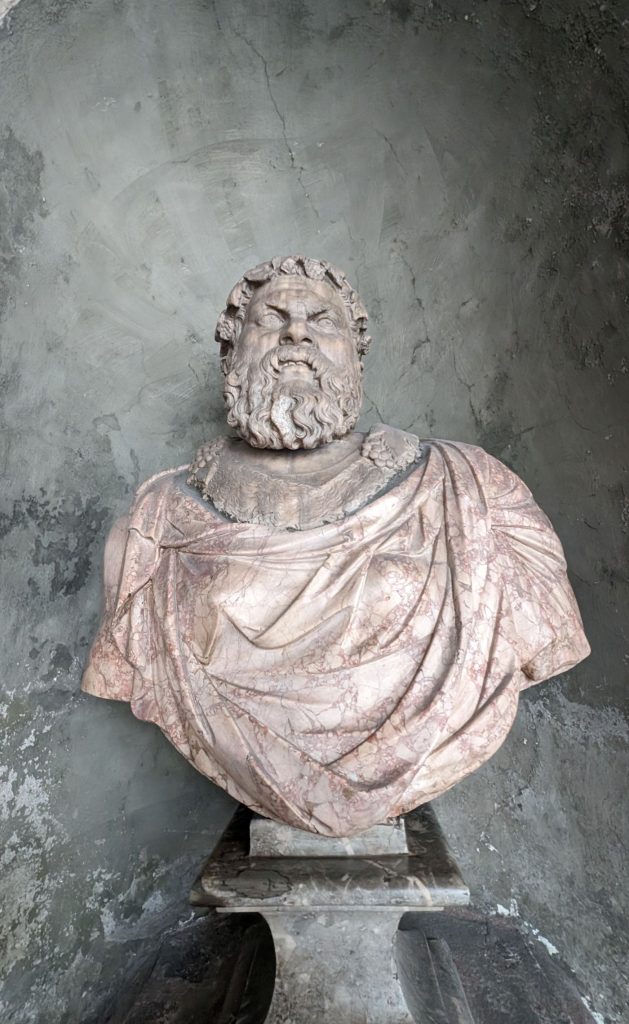
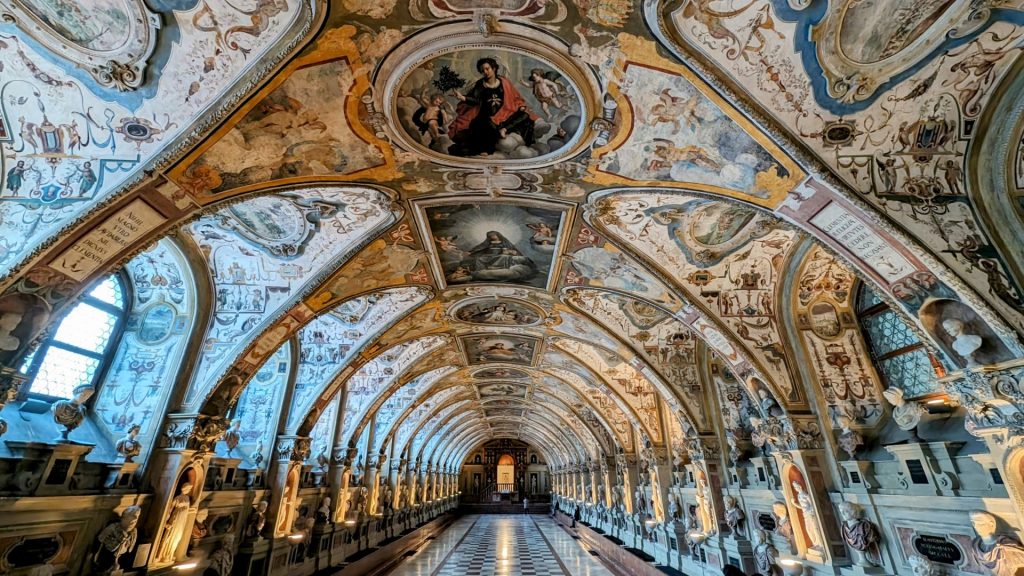
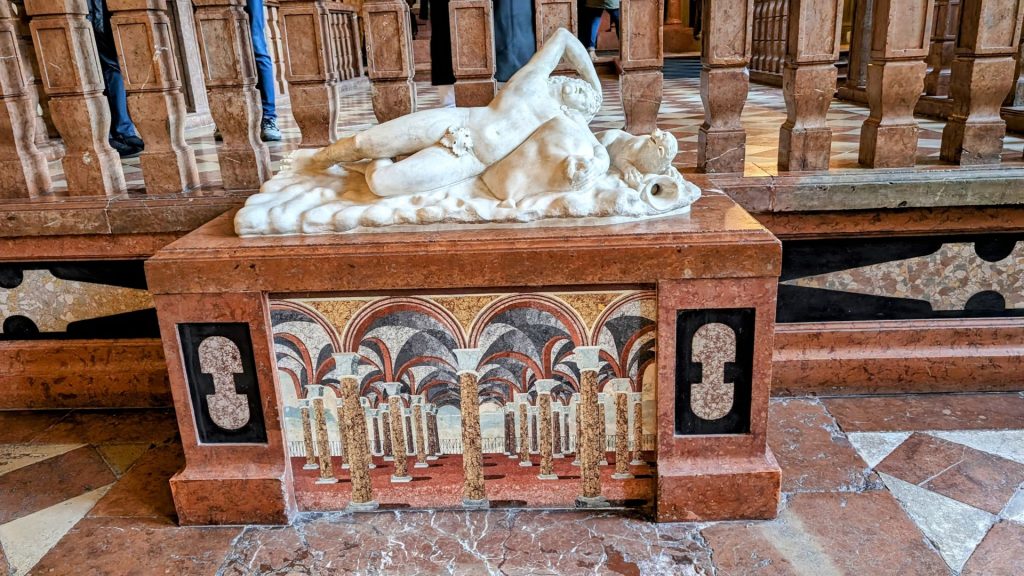
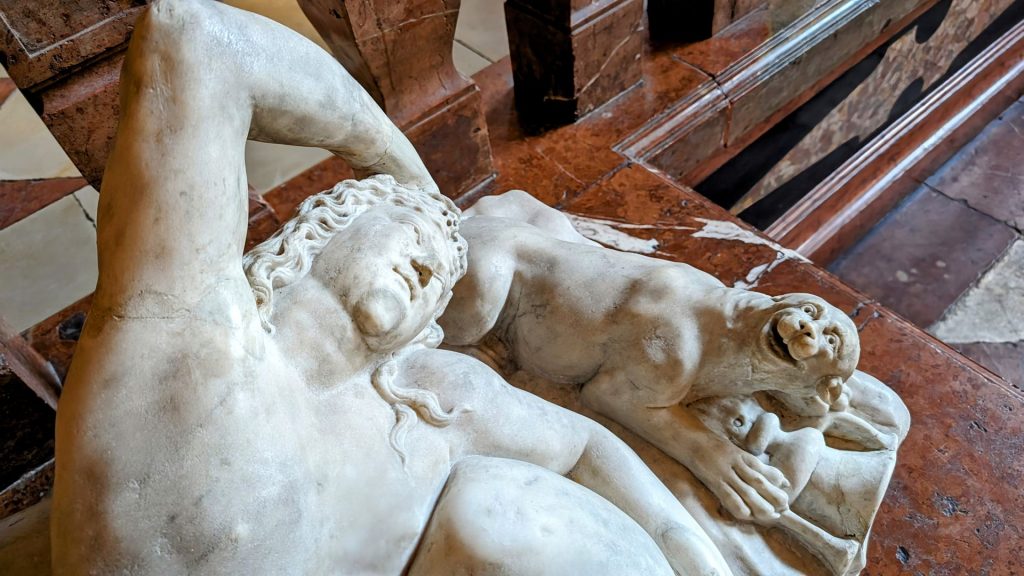
We have reached the colorful rooms and amazing art and furniture section of the palace.
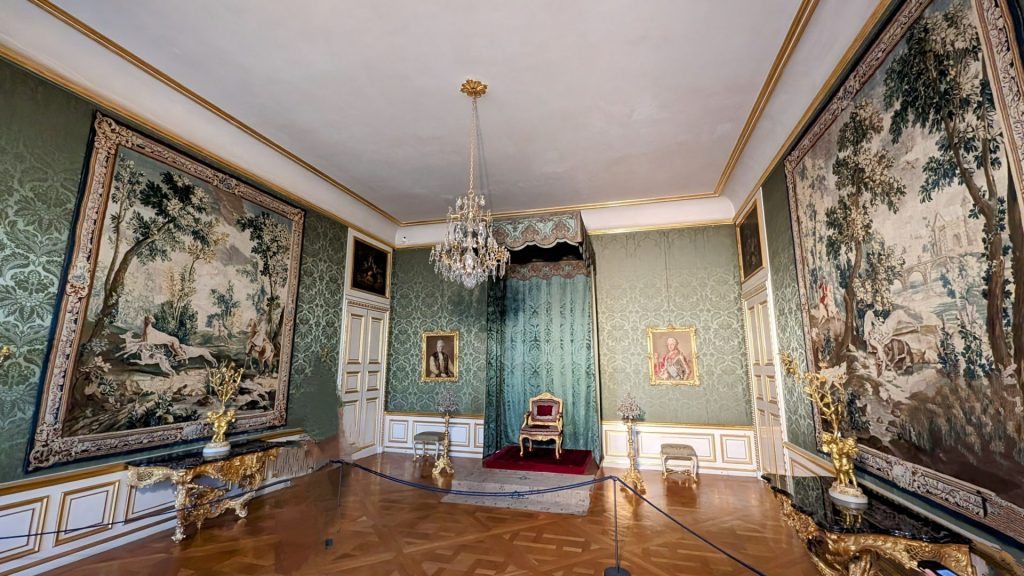
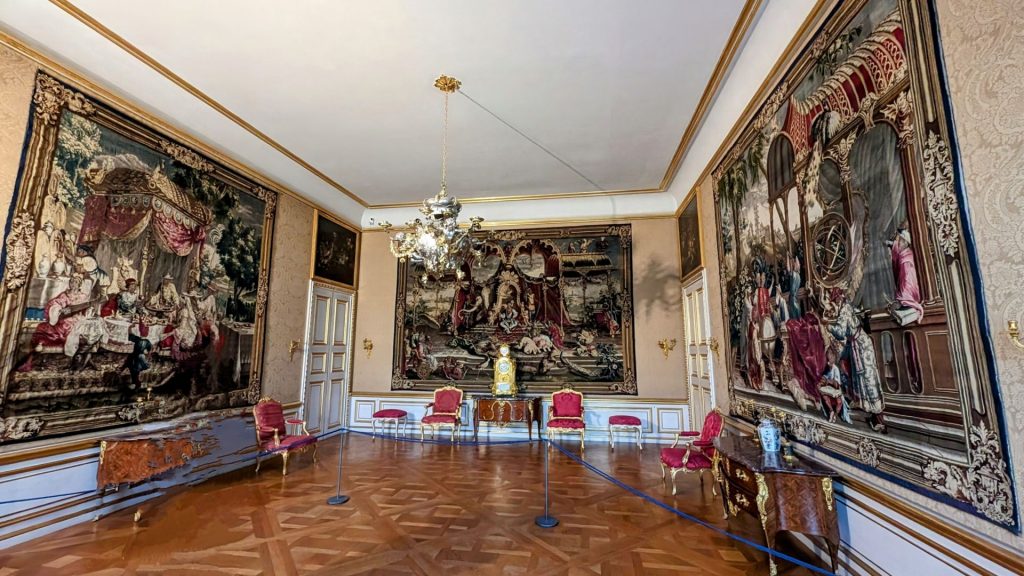
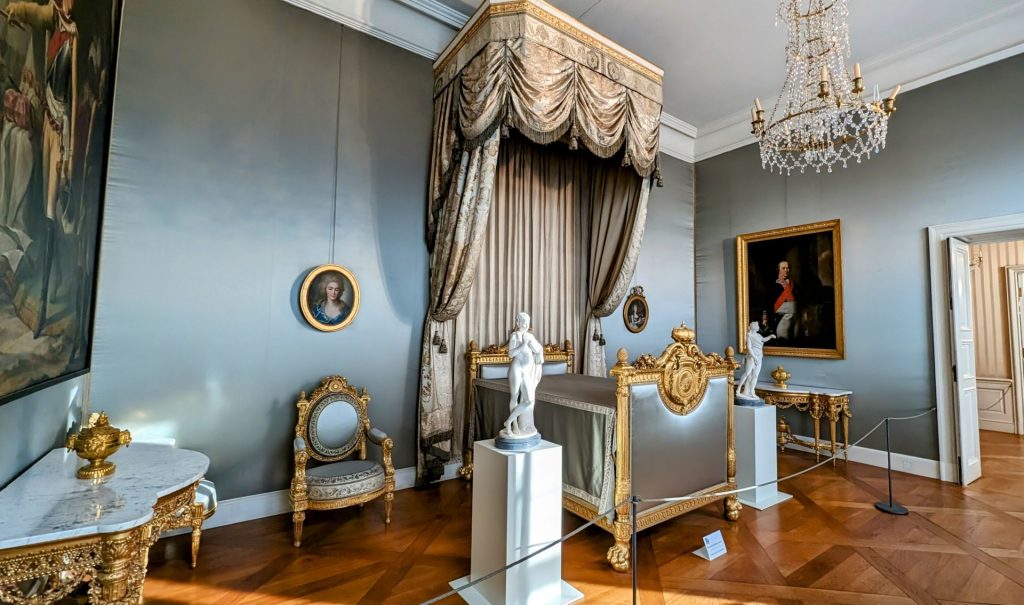
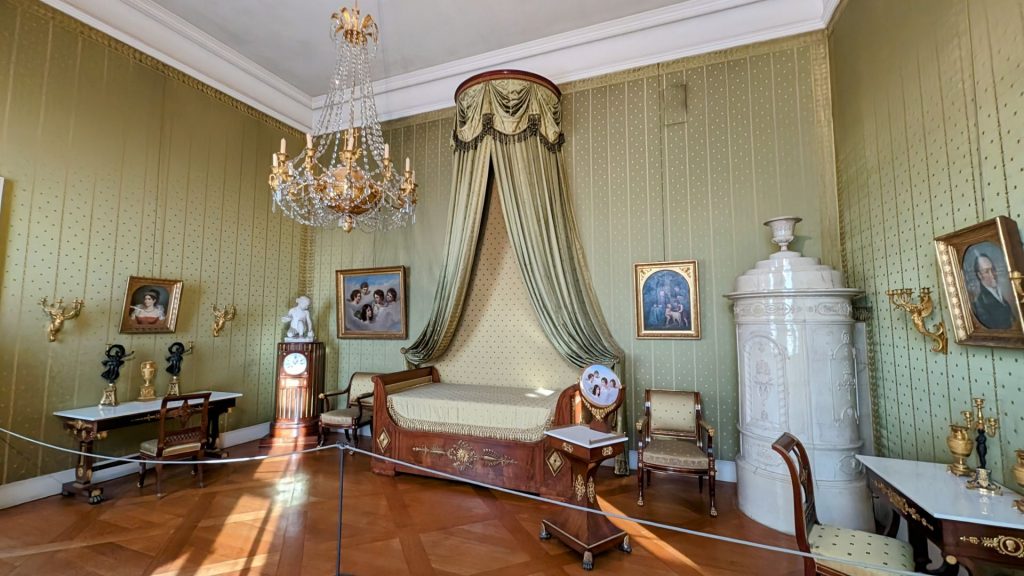
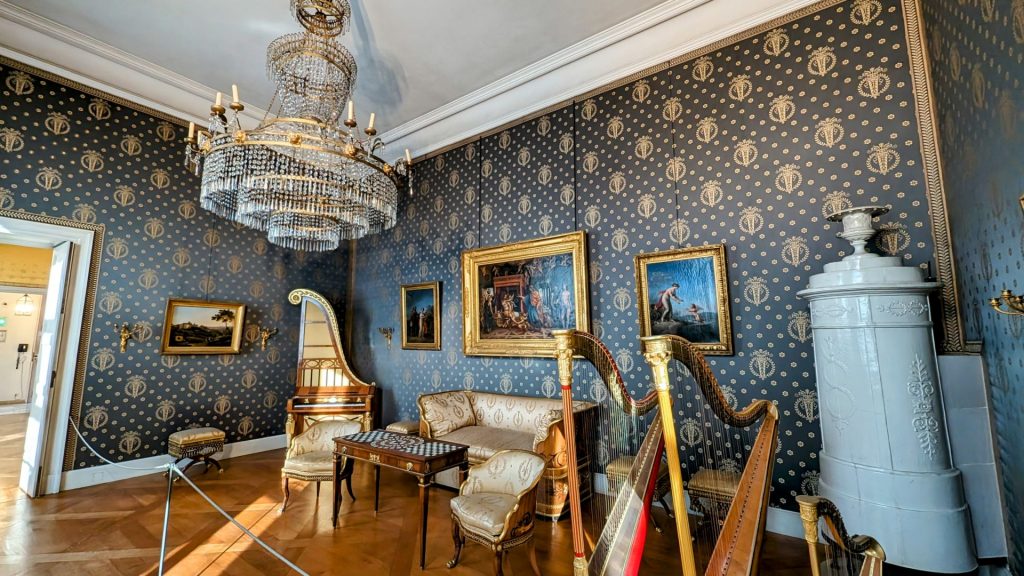
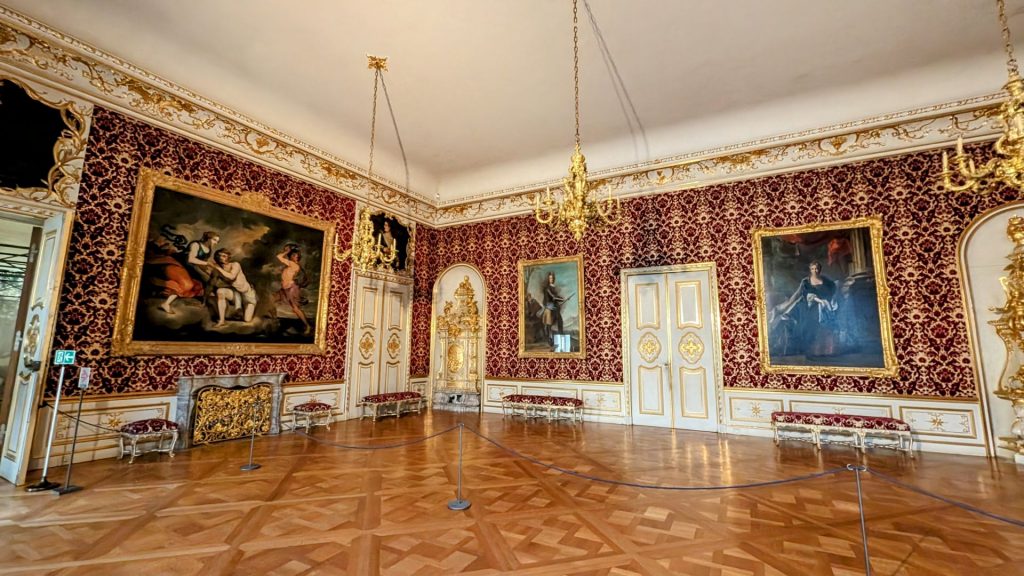
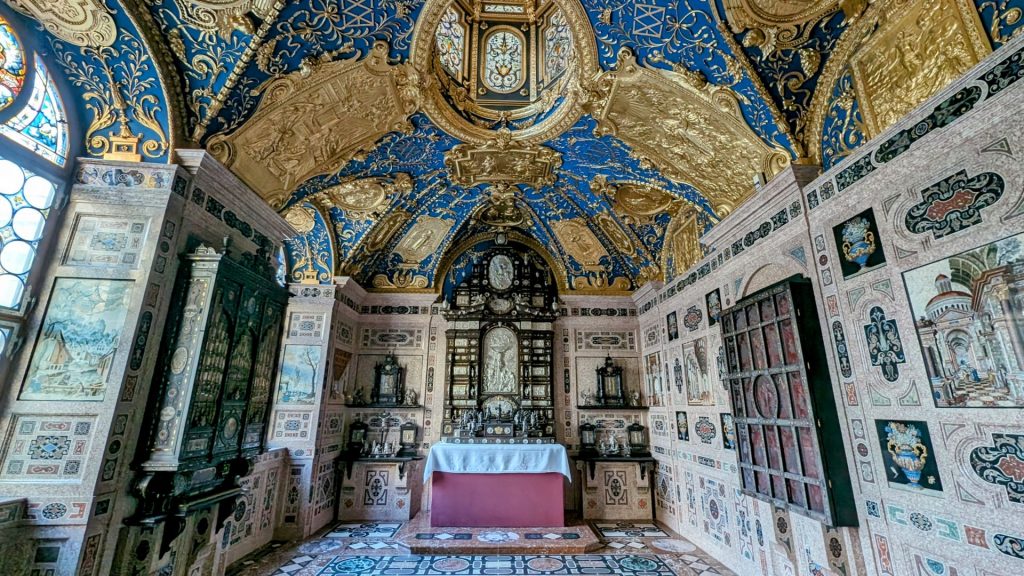
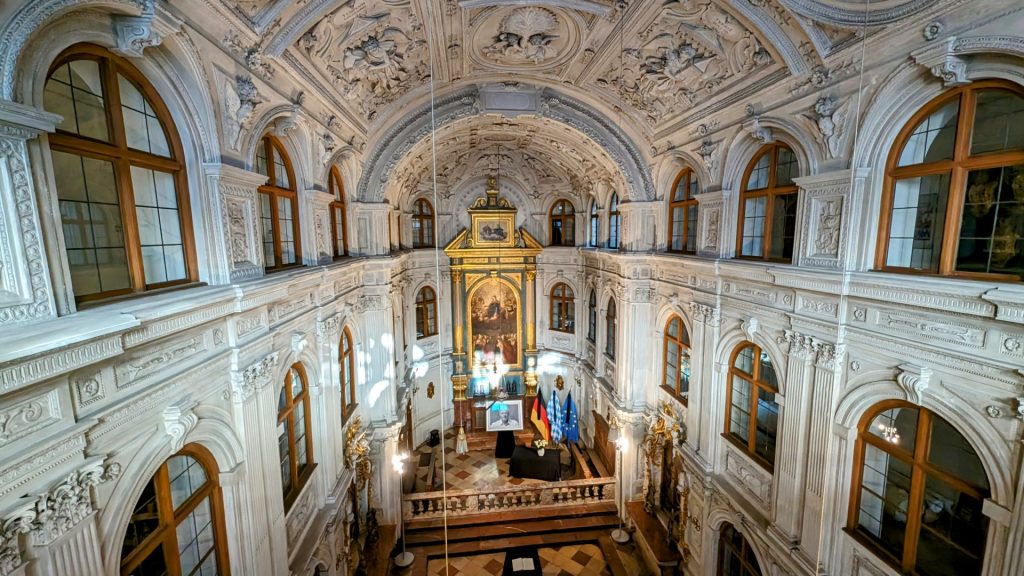
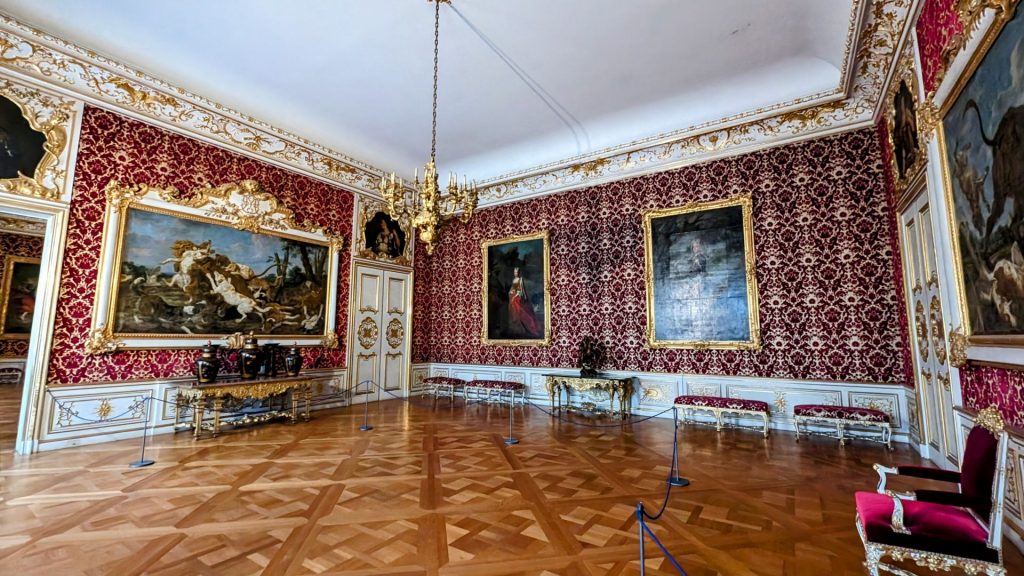
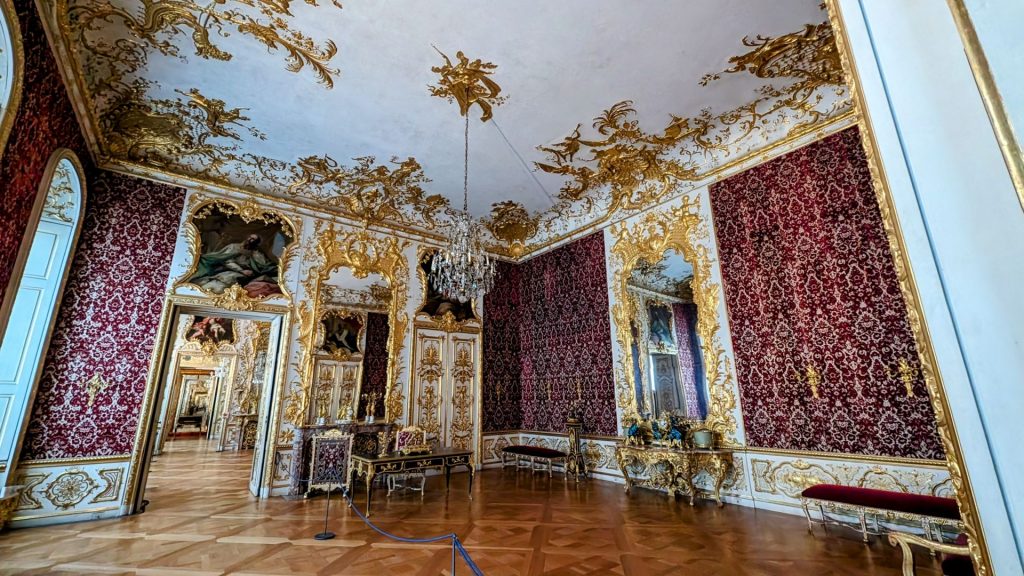
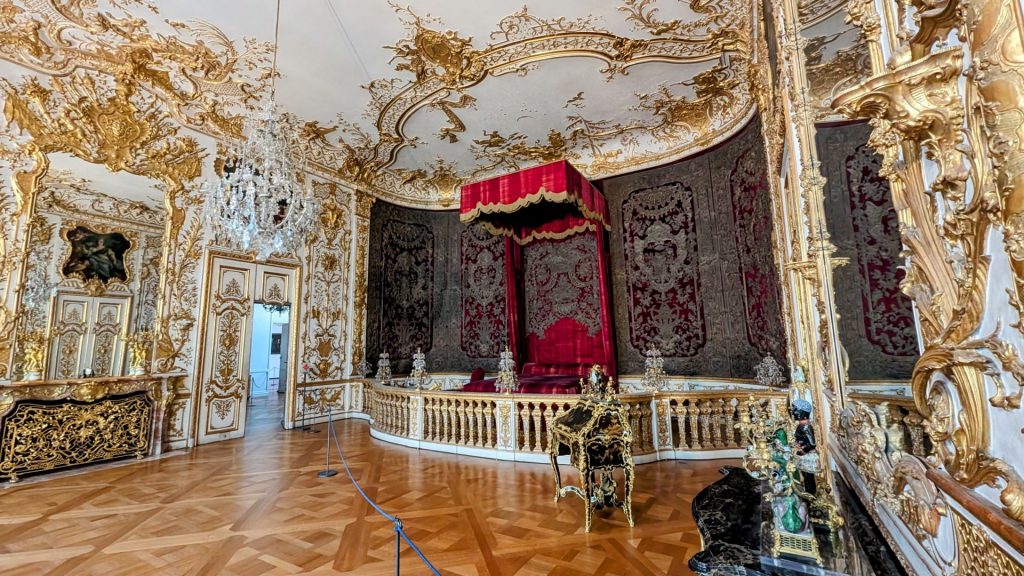
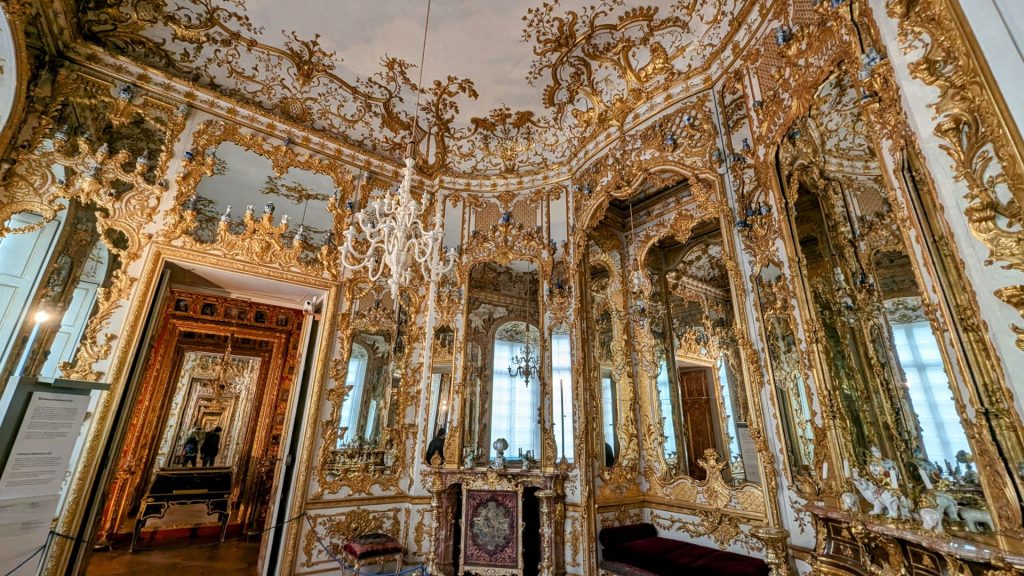
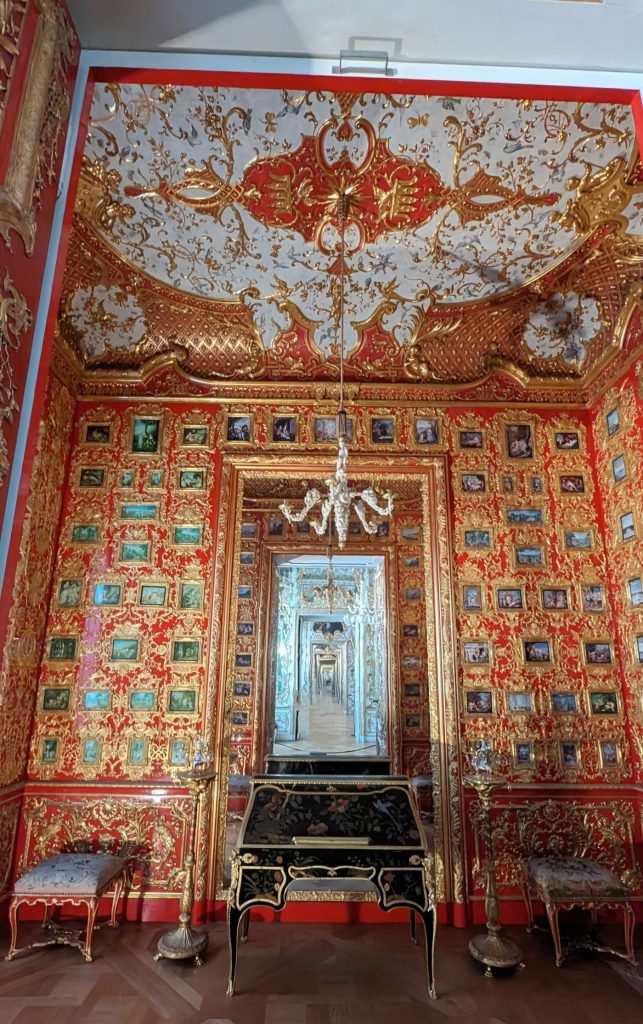
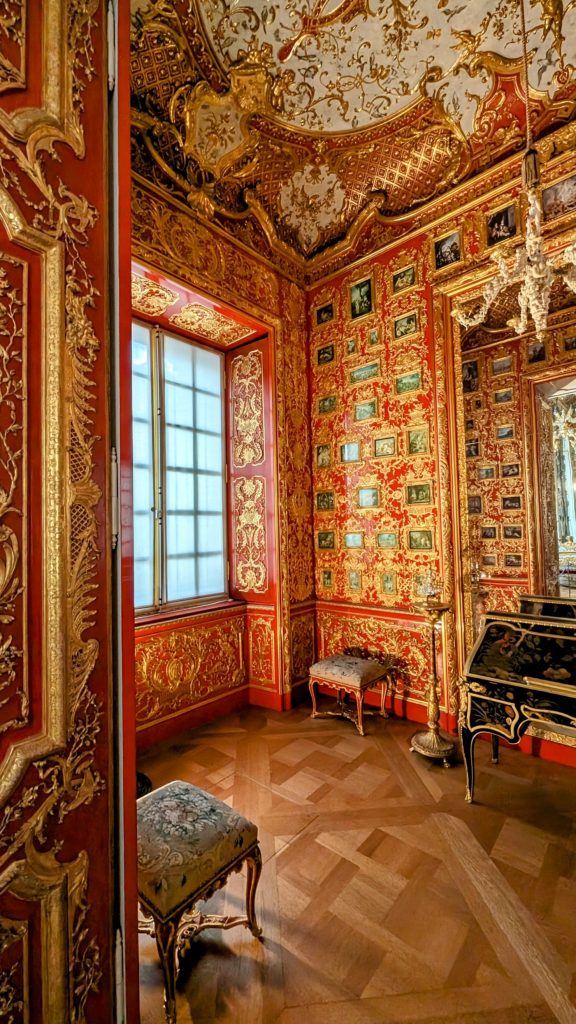
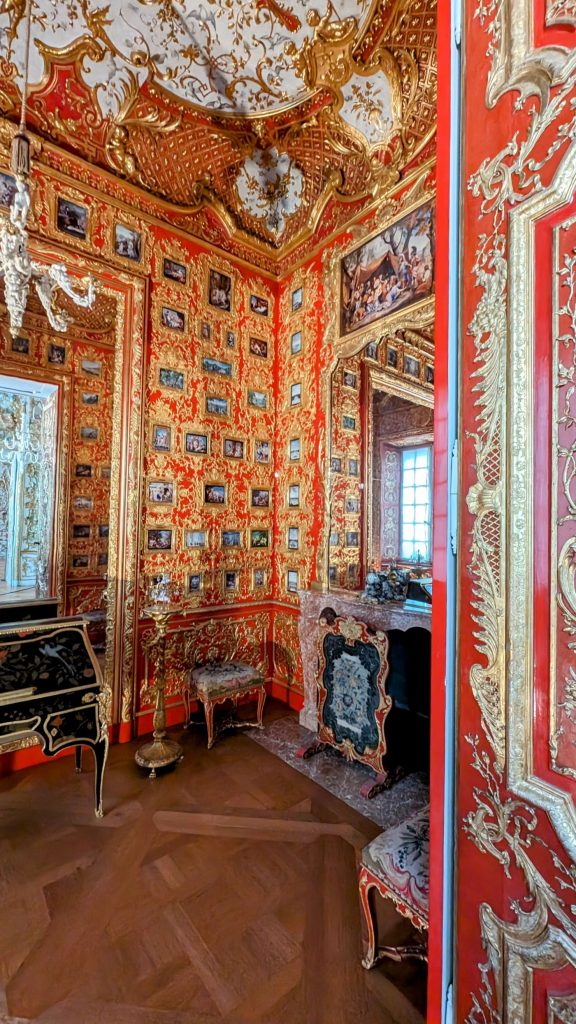
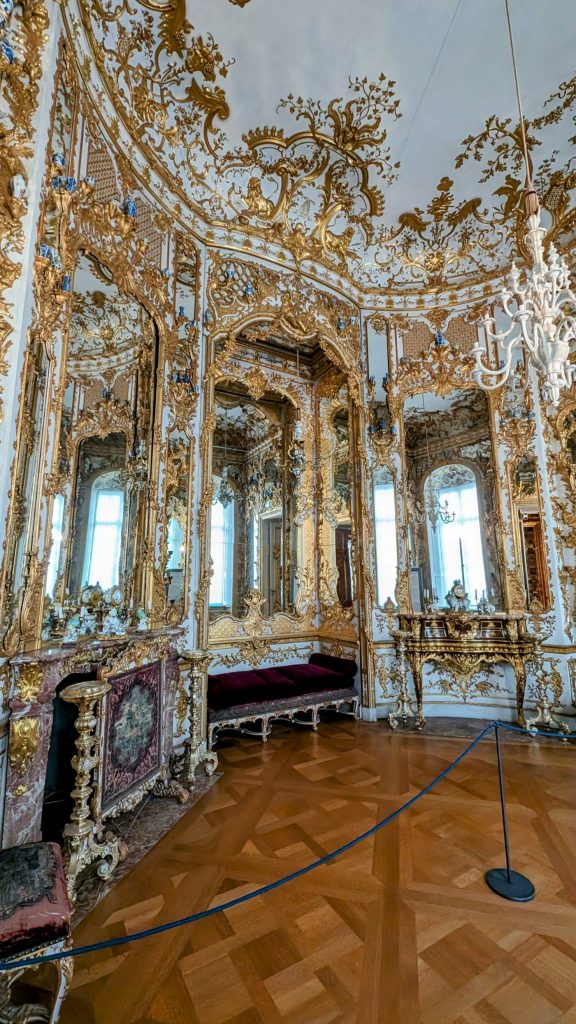
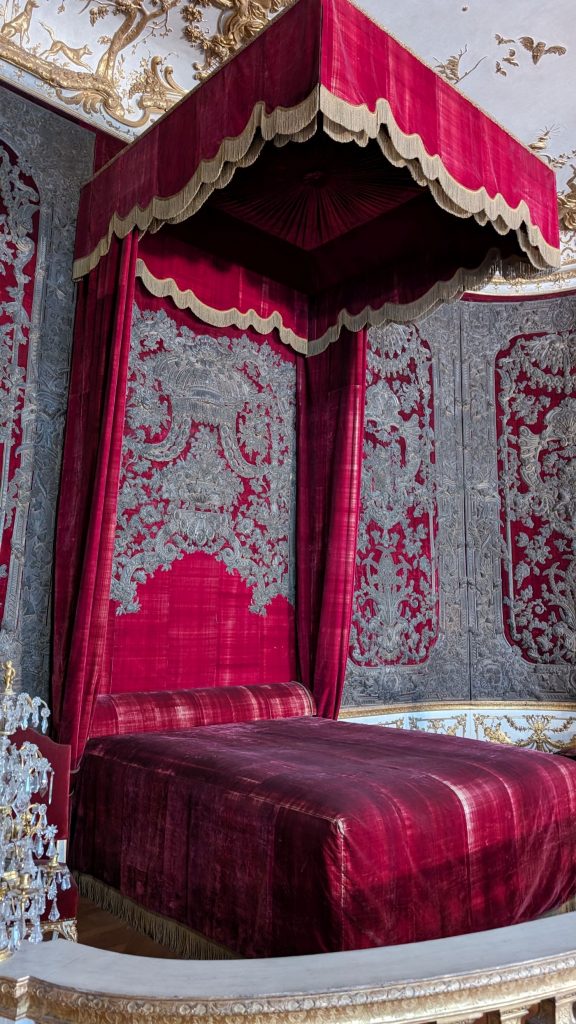
It was time to go to Lucerne, Switzerland. We took a train that required that we change to another train part-way through the trip. These are lovely, comfortable, roomy high speed trains.
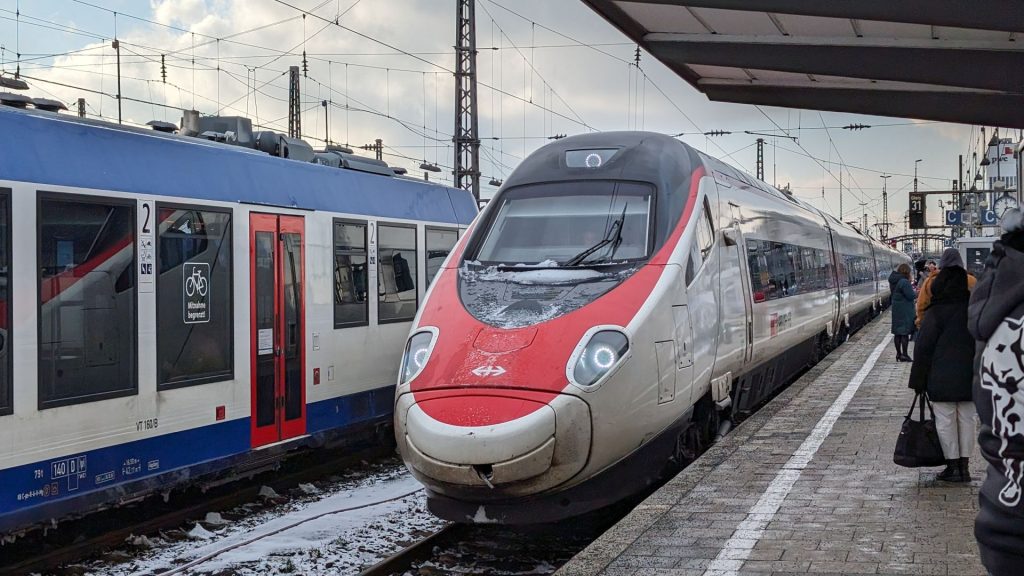
Part of the way through the first leg of the trip, we were informed that the train was not going to its destination due to. . . something or other (blockage on the track)? I went into panic mode and might perhaps have dropped the F-bomb a couple of times. A kind gentleman seated near us told us not to worry because, as he said, “there are a thousand trains to Lucerne.” Now, it is slightly possible that he was exaggerating for effect (or to get me to stop swearing), but I was glad to hear it. In fact, after searching on his phone for a few minutes, he found a train we could take at the next (and our new last) stop that went directly to Lucerne. When he exited the train with us, he also asked a train station employee if our tickets would be good for the next train. She assured us they would. There is a special place in heaven for people like him.
Now, if there are any children reading this, I should point out that your parents probably don’t want you using the F-word. But if you are going to use it, this is an example of an appropriate time. Just ask your parents.
We had no idea what to expect in Lucerne, but we were lucky enough to have arrived during their 10-day light festival. Oh. My. Gosh! How lucky are we?!?! The festival ran from Jan. 11-21 and we arrived the evening of the 19th. Of course, at the time, we didn’t know it was unusual, so we simply oohed and aahed (and gasped on occasion) and took a boatload of pictures.
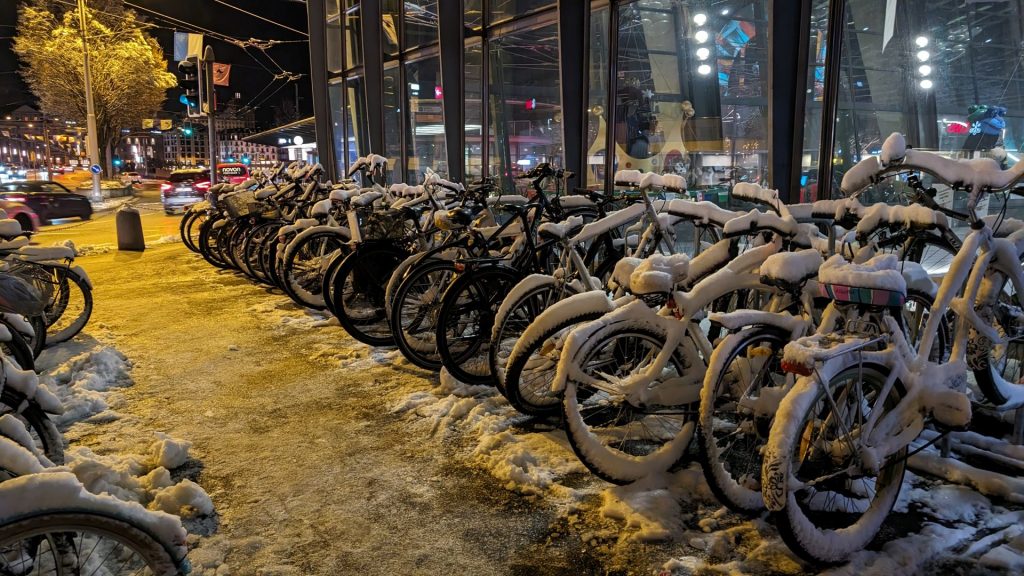
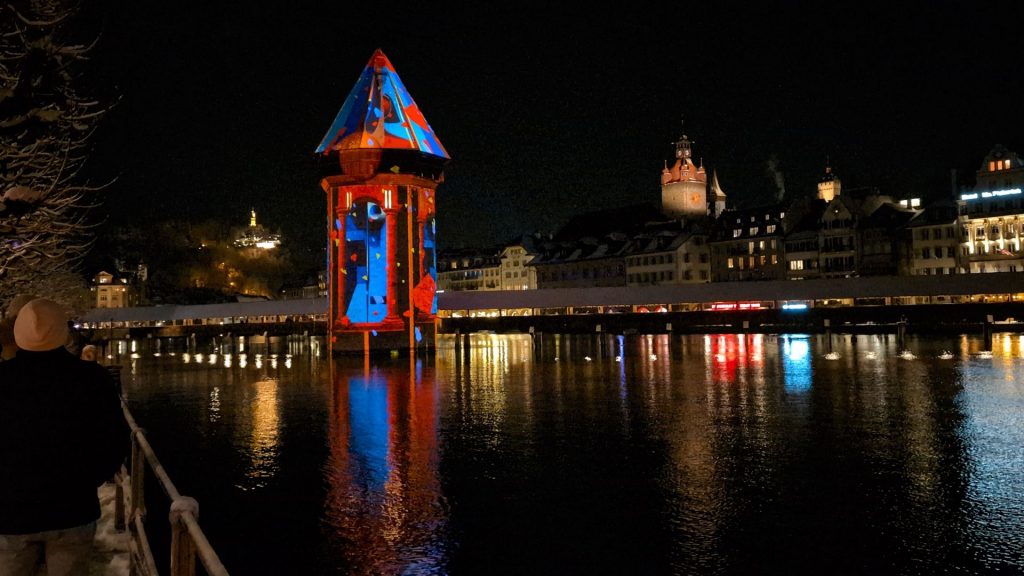
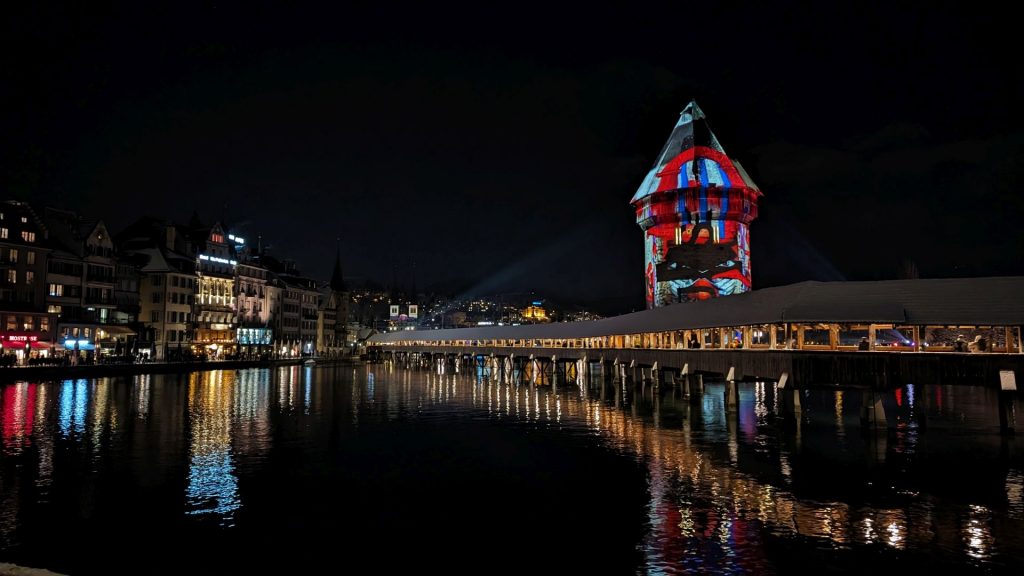
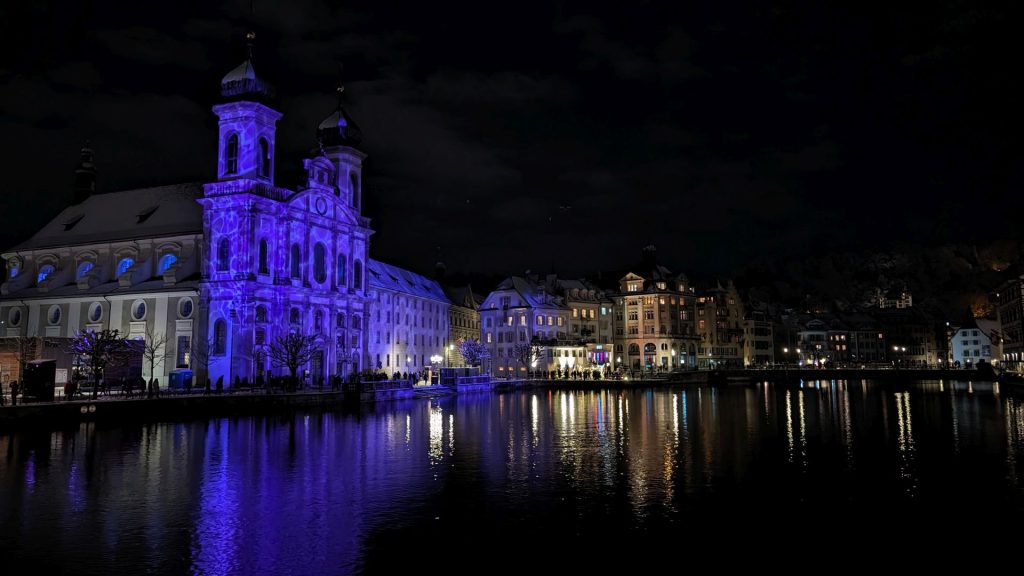
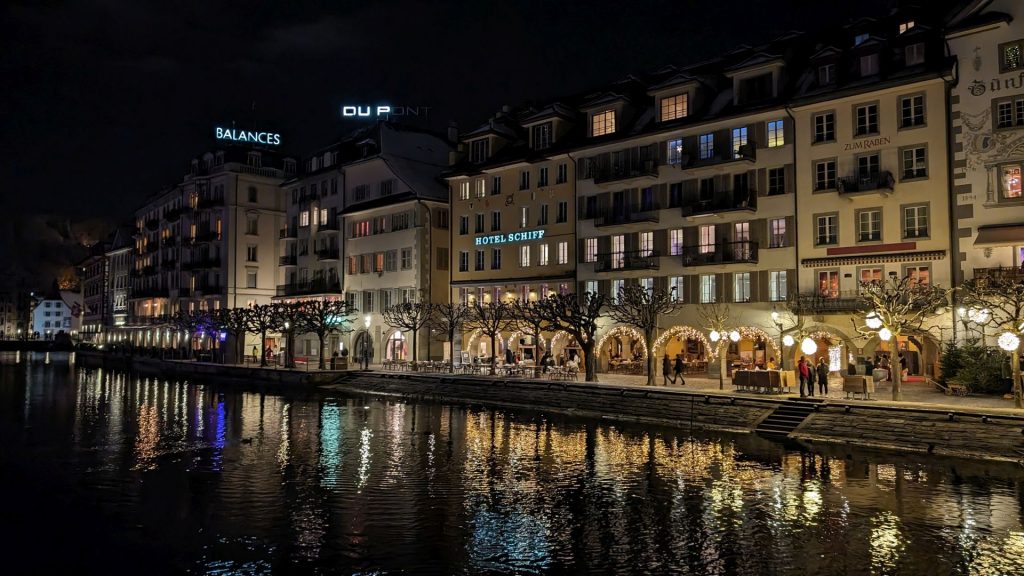
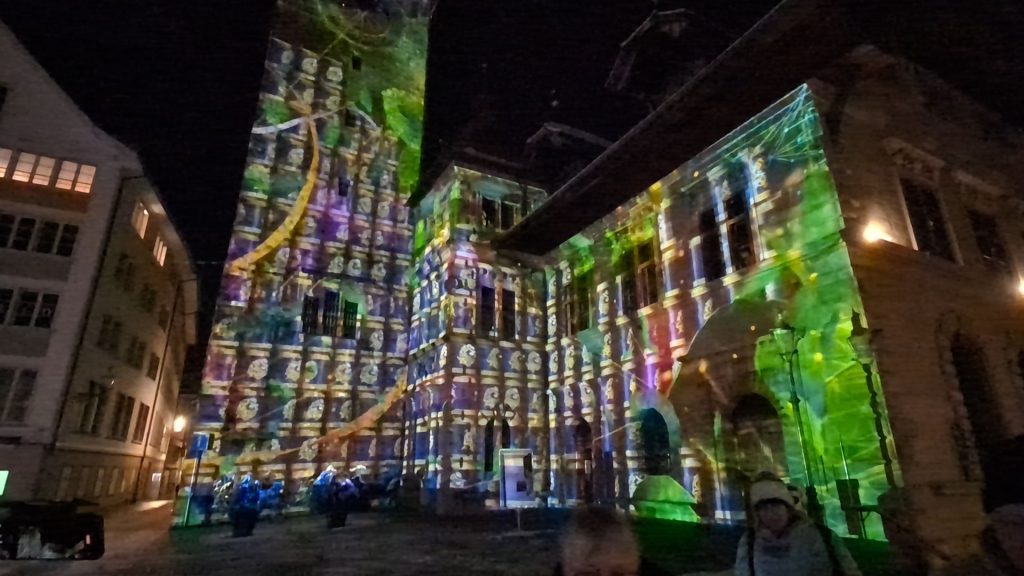
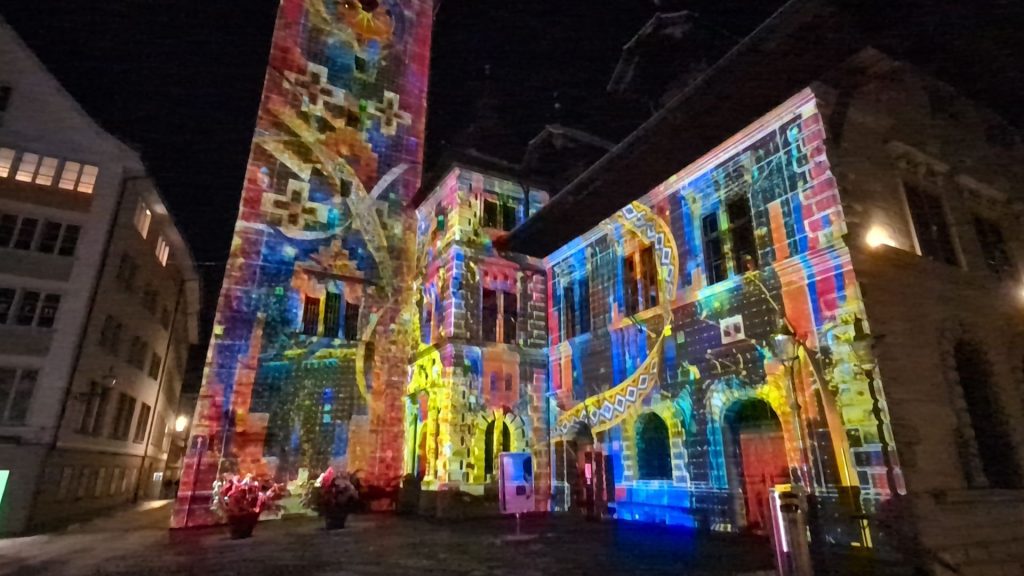
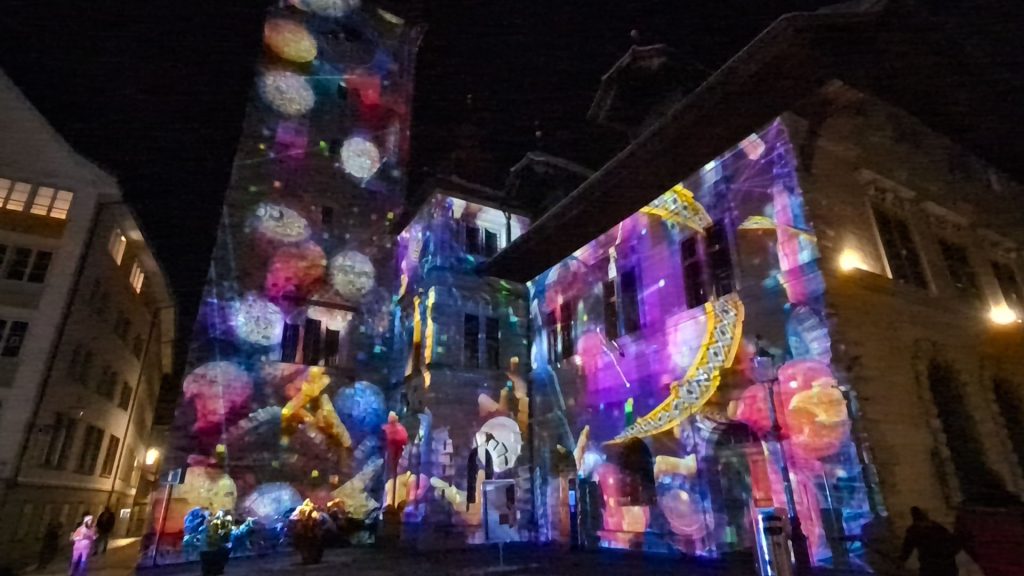
It was a very short walk from the “movie building” to our hotel: Hotel Le Stelle. We had a great view from our room:
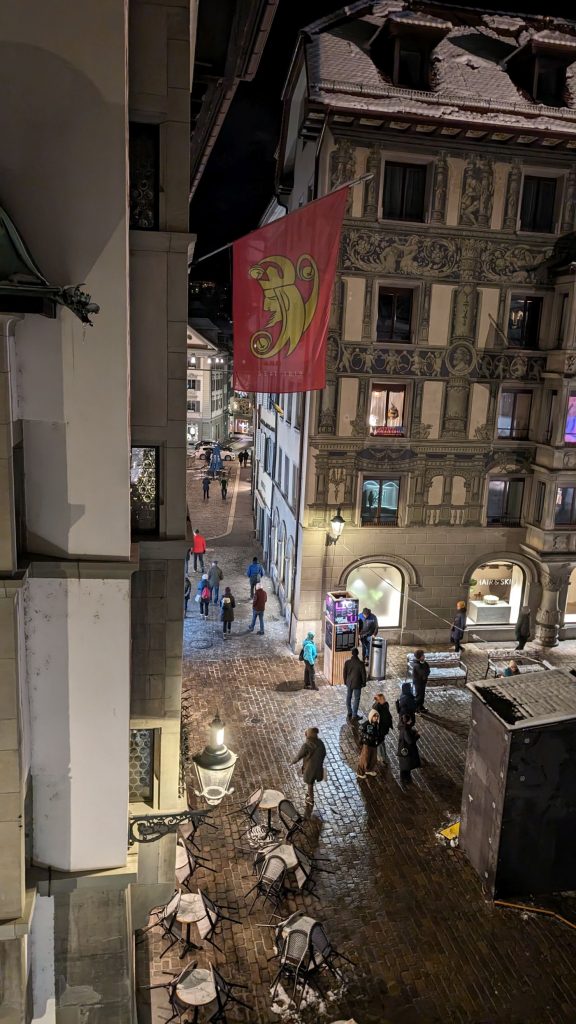
Let me take a step back and tell you that planning the (too) short trip to Switzerland was difficult. There are so many things to see, primarily mountains. I wanted to visit a mountain that wasn’t too far out of the way and wasn’t too expensive to visit. So, the last “want” couldn’t be fulfilled. The cable cars up the mountains were all expensive.
That said, Mount Pilatus was very near Lucerne and had great ratings as a sightseeing destination. Mount Pilatus it is! It was a good choice! But before we go there, here are some pictures of Lucerne in the daylight.
The picture below is of Château Gütsch, which is a hotel. We did not stay there, but I thought it was quite stunning. The picture on the right below
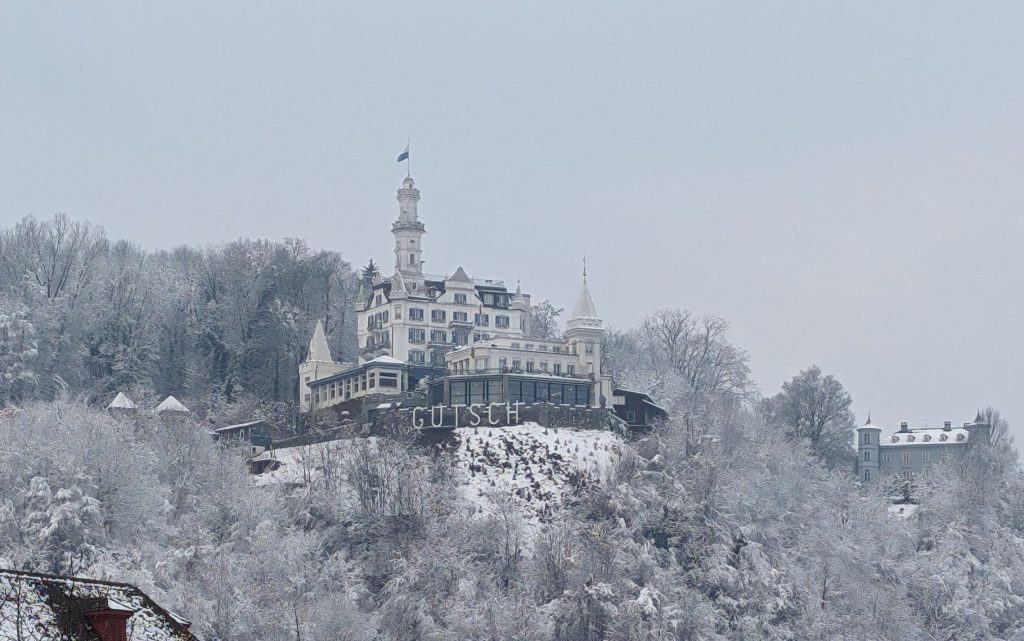
The next few pictures are of The Kapellbrücke (literally, Chapel Bridge). From wikipedia:
The Kapellbrücke is a covered wooden footbridge spanning the river Reuss diagonally. Named after the nearby St. Peter’s Chapel, the bridge is unique in containing a number of interior paintings dating back to the 17th century, although two thirds of them were destroyed along with a larger part of the centuries-old bridge in a 1993 fire. The bridge was reconstructed and again opened to the public on 14 April 1994 for a total of CHF 3.4 million. [CHF is the Swiss Franc. As of today (March 11, 2024), one CHF is equivalent to $1.14.] Subsequently restored, the Kapellbrücke is the oldest wooden covered bridge in Europe, as well as the world’s oldest surviving truss bridge.
Part of the bridge complex is the octagonal 34.5 m (113 ft) tall (from ground) “Wasserturm”, which translates to “water tower,” in the sense of “tower standing in the water.” The tower pre-dated the bridge by about 30 years. Over the centuries, the tower has been used as a prison, torture chamber, and later a municipal archive as well as a local treasury. Today, the tower is closed to the public, although it houses a local artillery association and a tourist gift shop.
The bridge itself was originally built c.1365 as part of Lucerne’s fortifications. It linked the old town on the right bank of the Reuss to the new town on the left bank, securing the town from attack from the south (i.e. from the lake). The bridge was initially over 270 meters (890 ft) long, although numerous shortenings over the years and river bank replenishments mean the bridge now totals only 204.7 meters (672 ft) long.
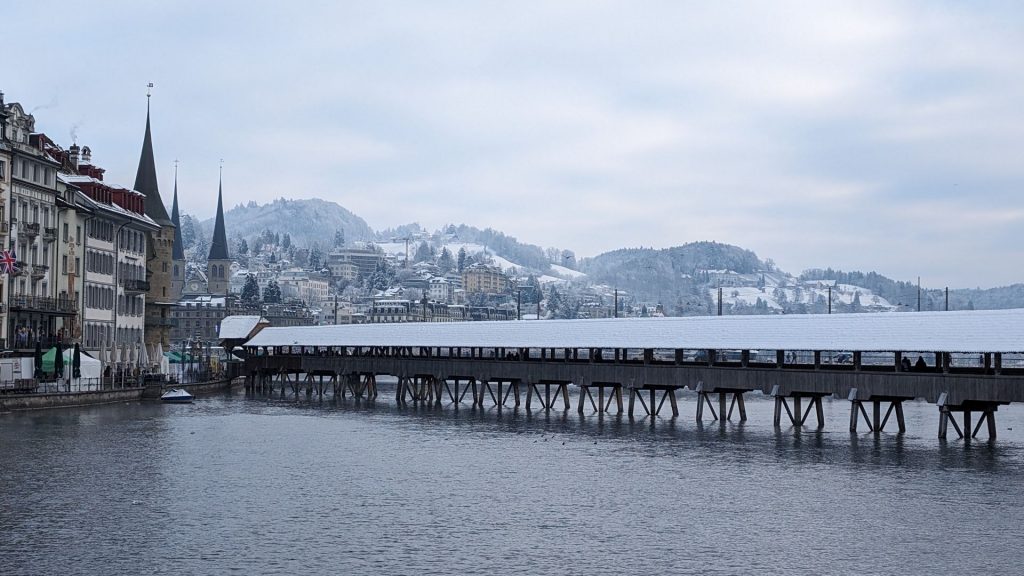
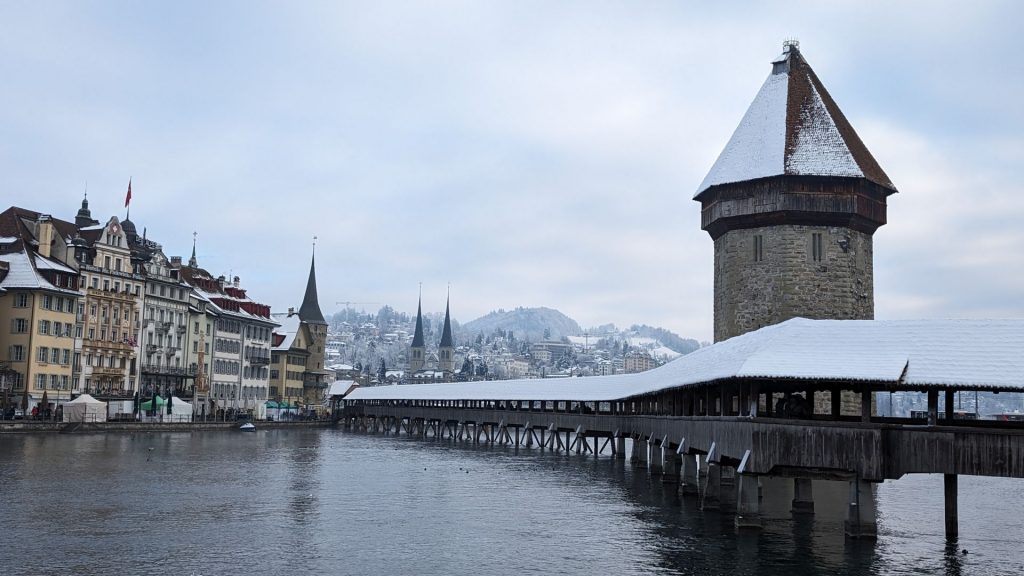
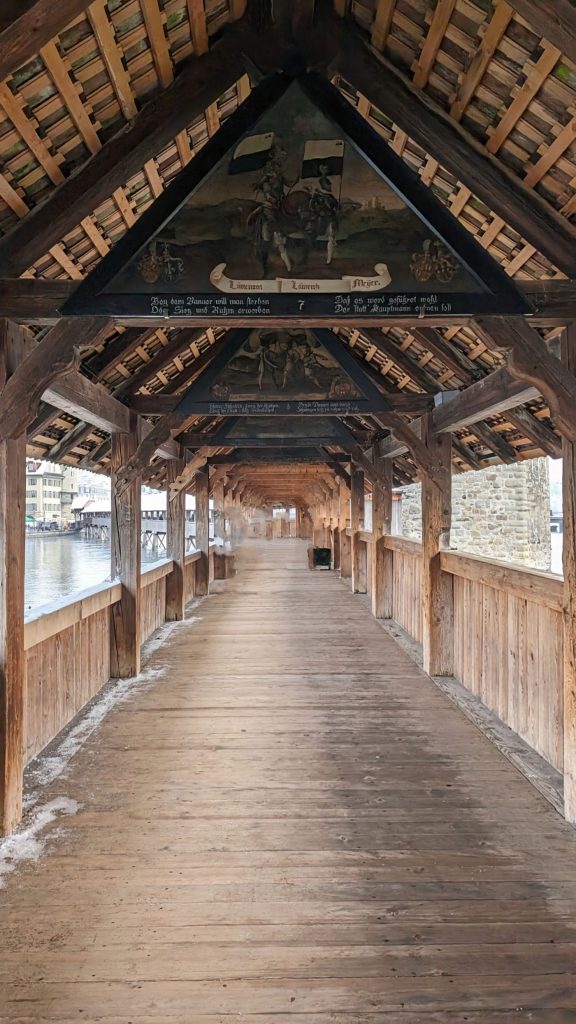
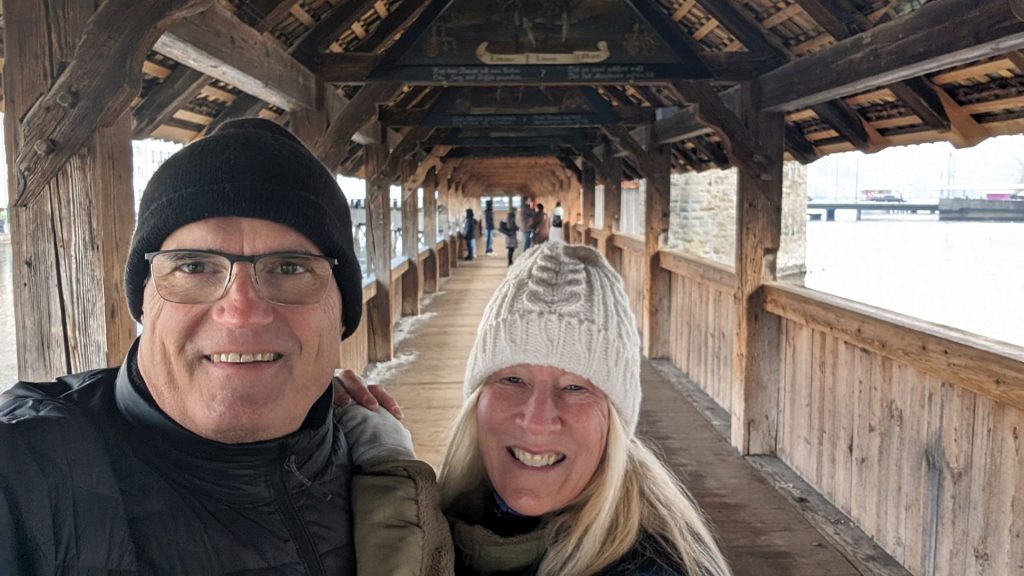
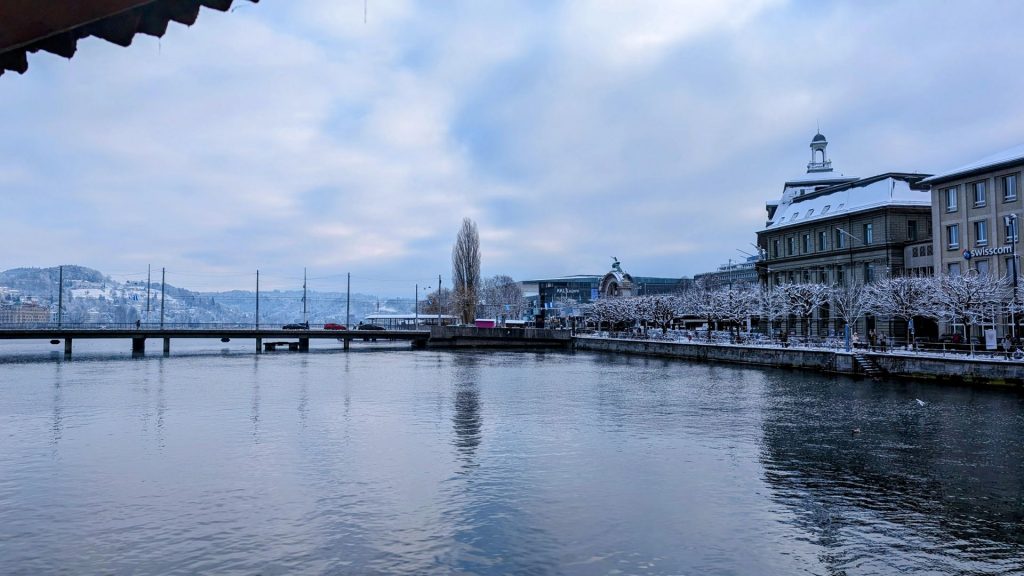
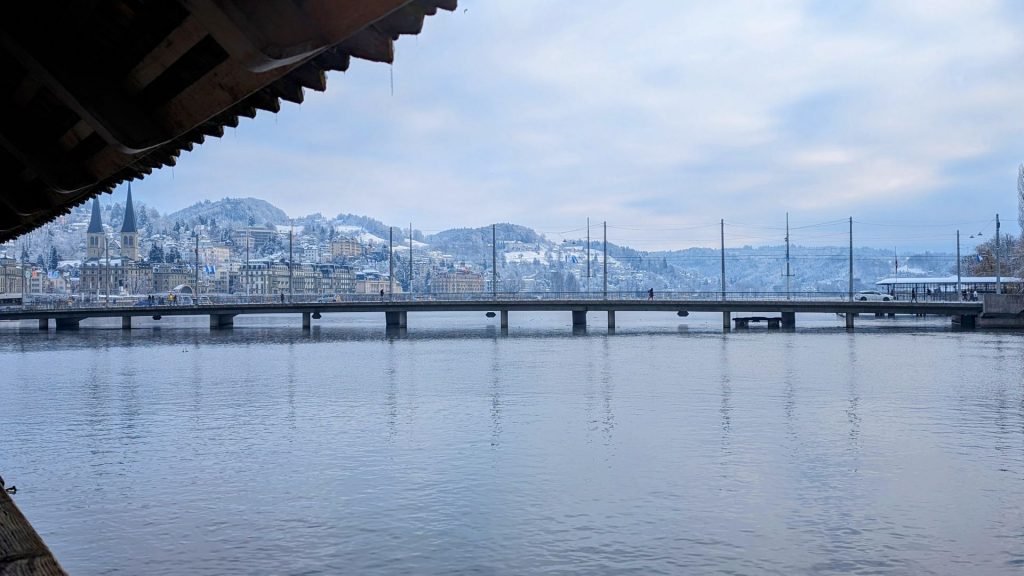
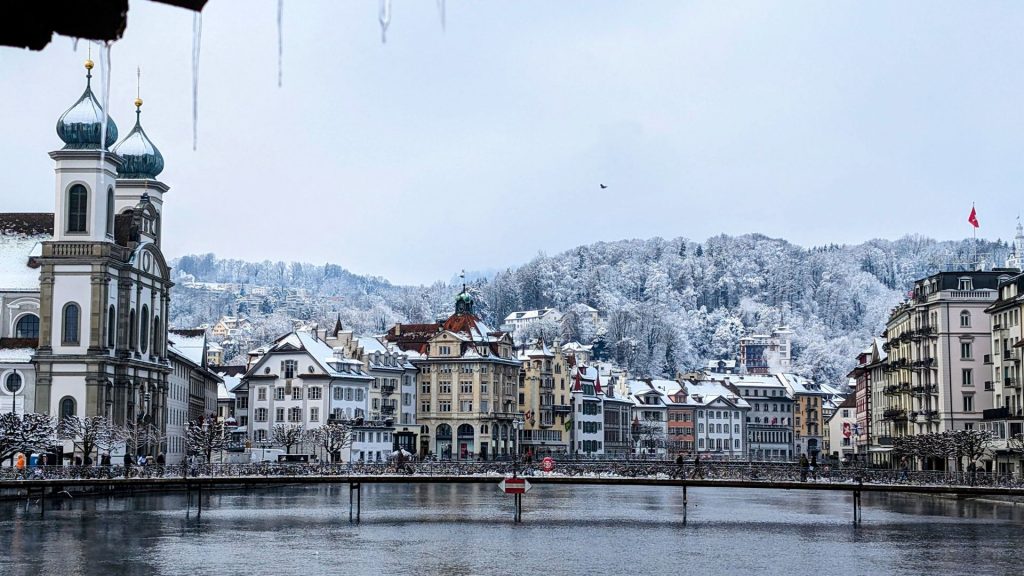
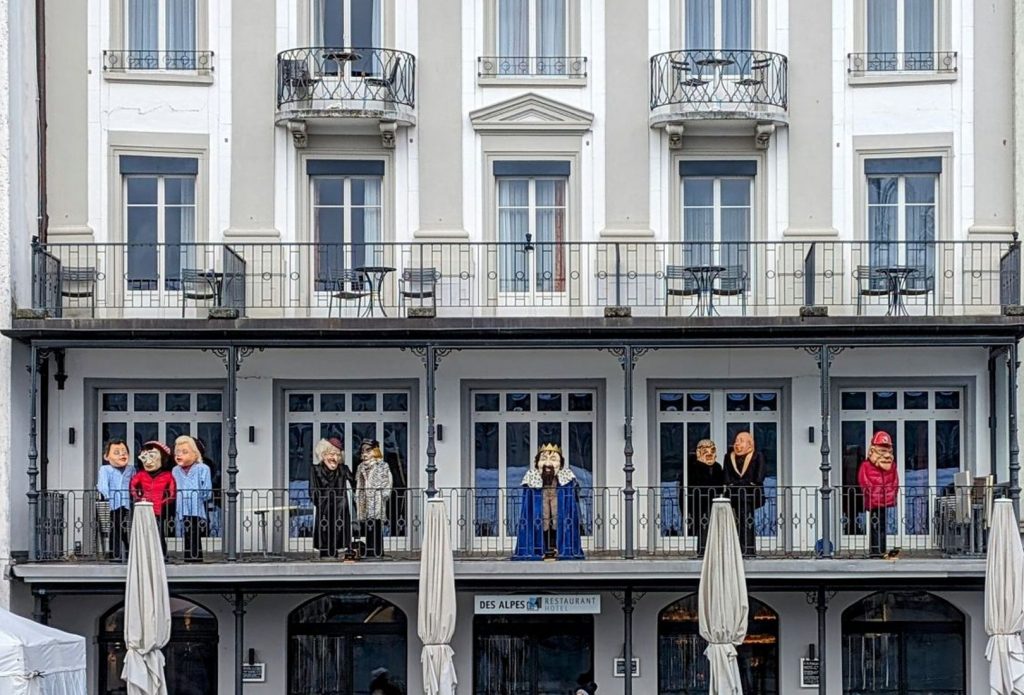
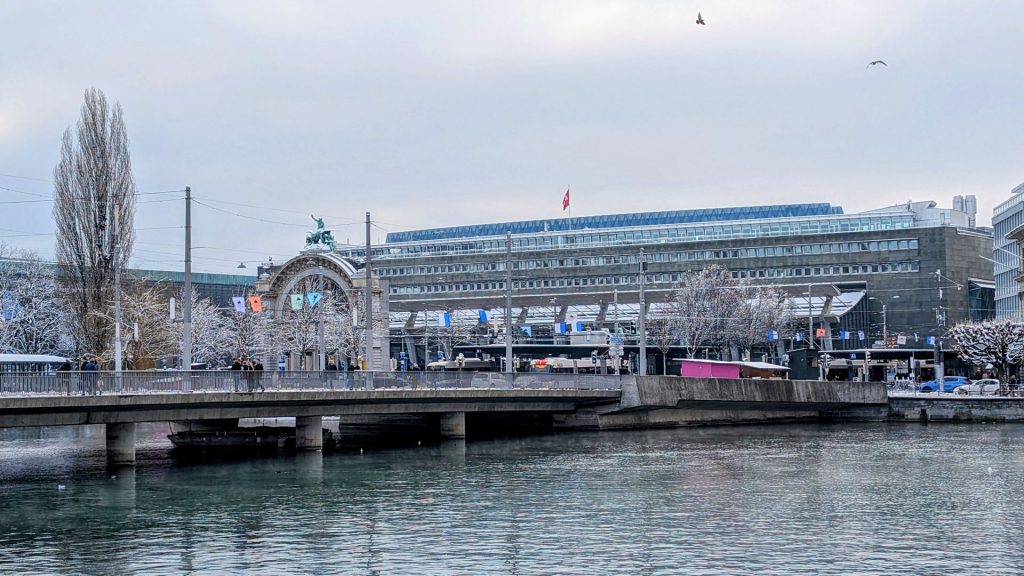
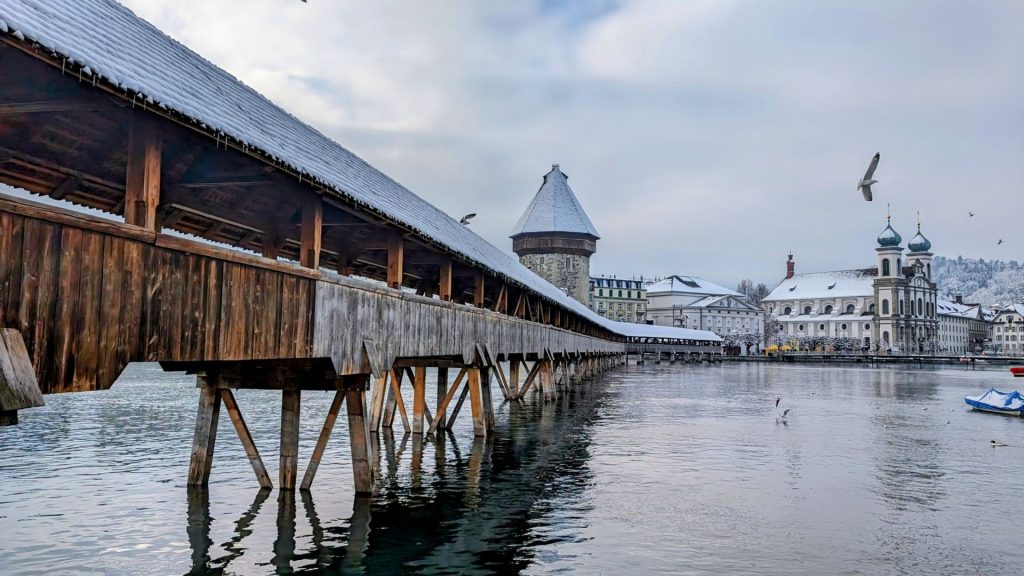
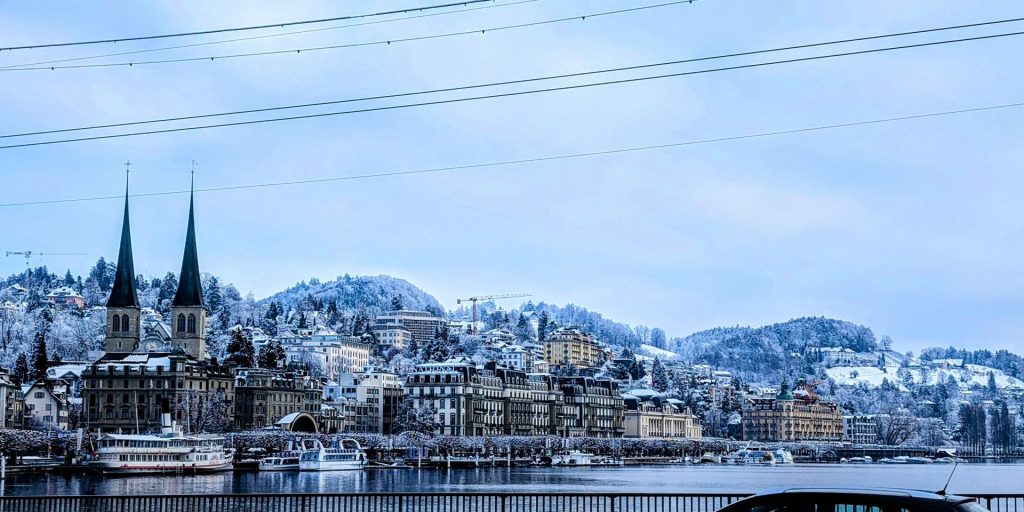
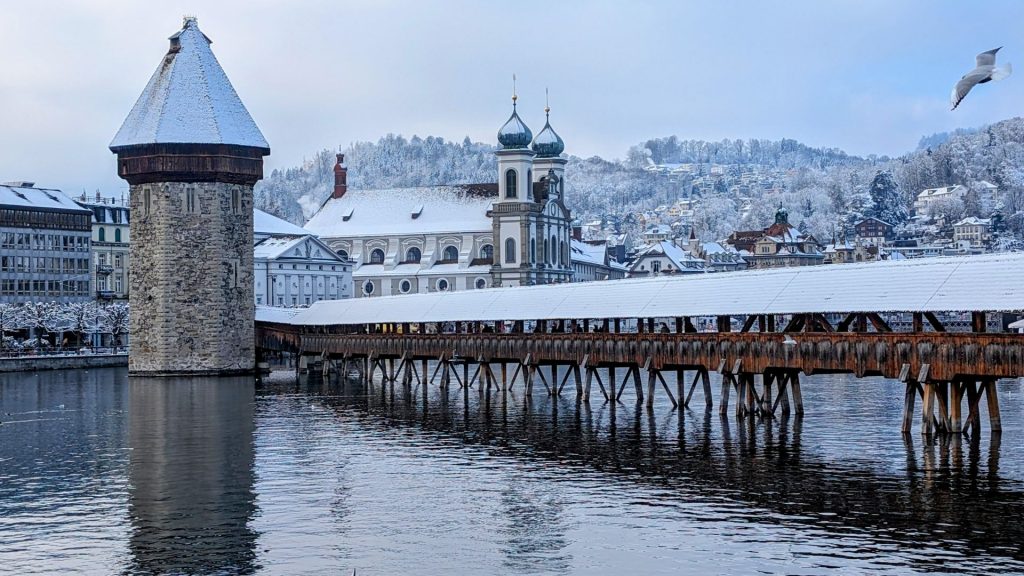
Here are a few pictures of the 17th-century baroque Jesuit Church of Saint Francis Xavier, located in Lucerne and noticeable from the outside by its dull-green twin onion domes.
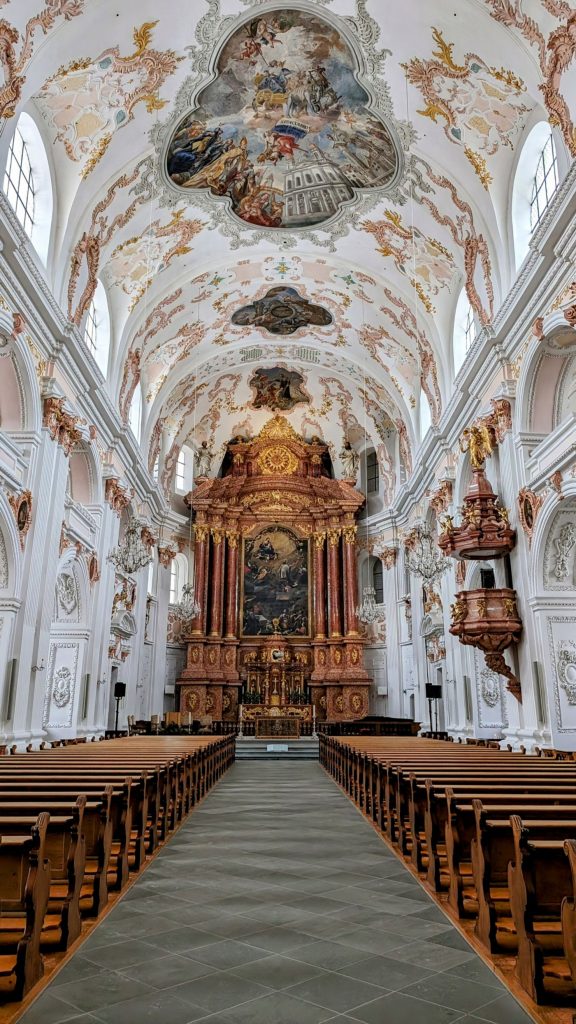
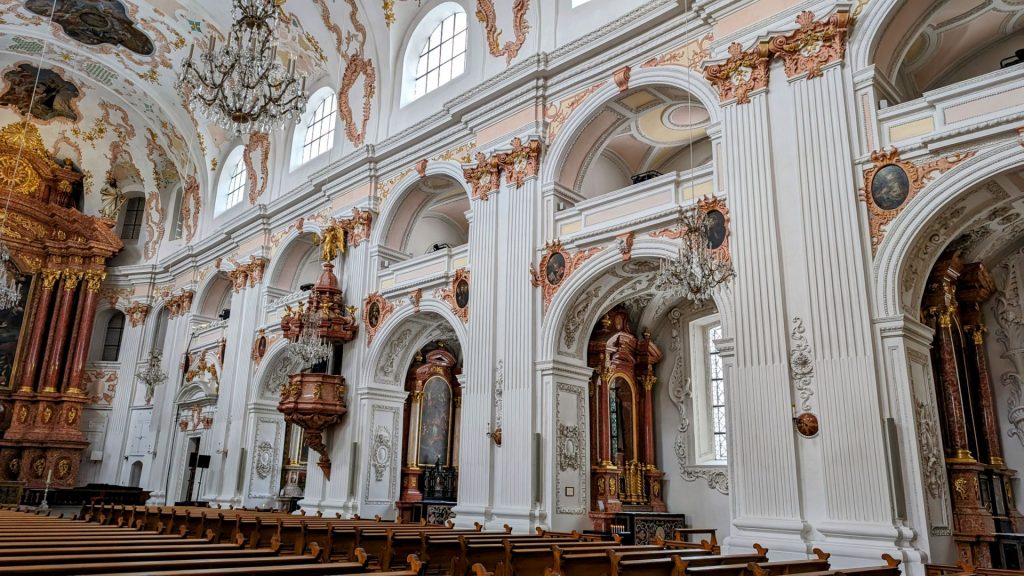
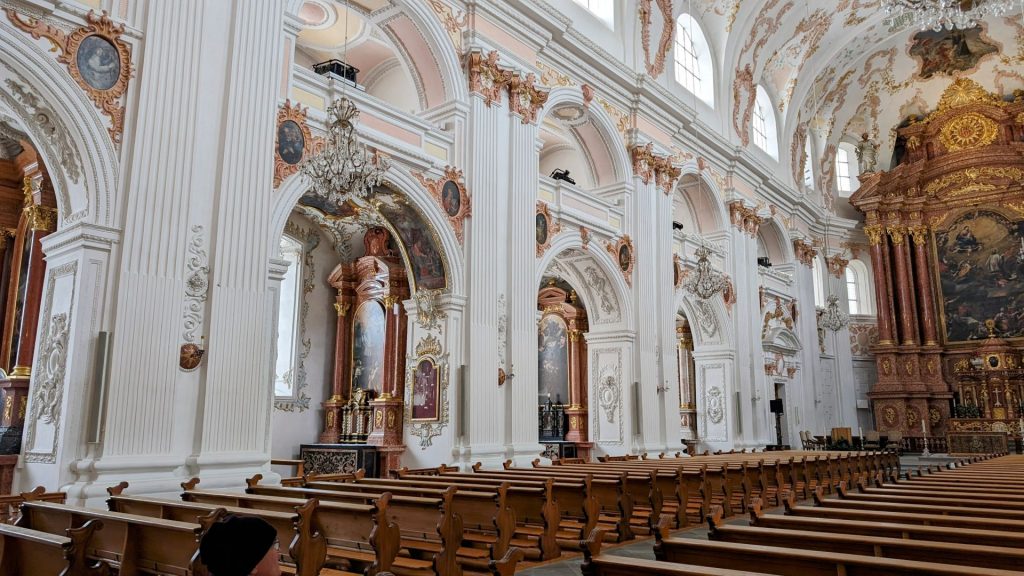
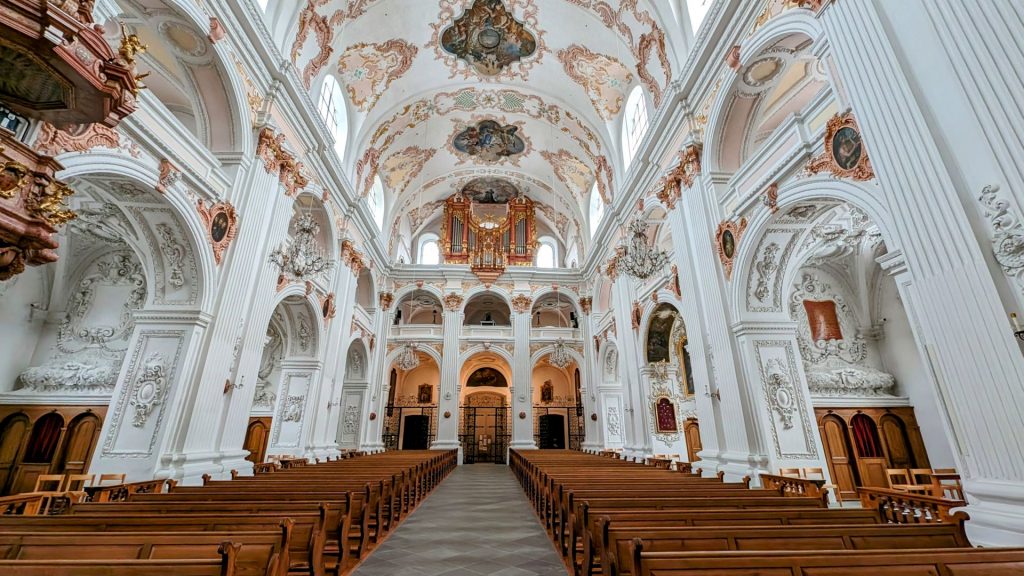
As you can see from the above pictures, Lucerne is beautiful! But it was time to leave Lucerne for Mount Pilatus. It was quite cloudy, so we weren’t sure if we would be able to see anything from the top, but we only had the day, so we took our chances. Much to our delight we rose above the clouds and had terrific views!
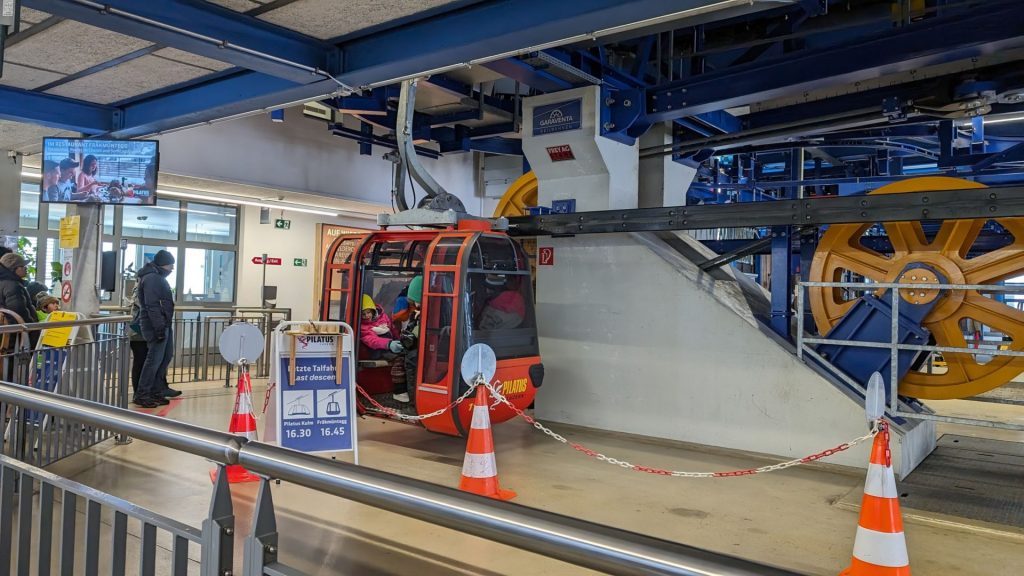
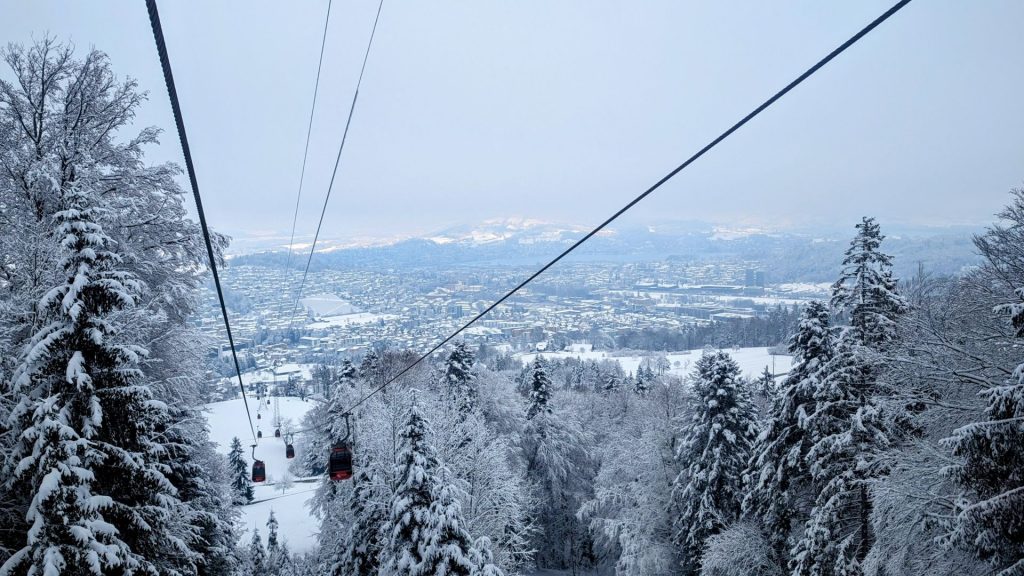
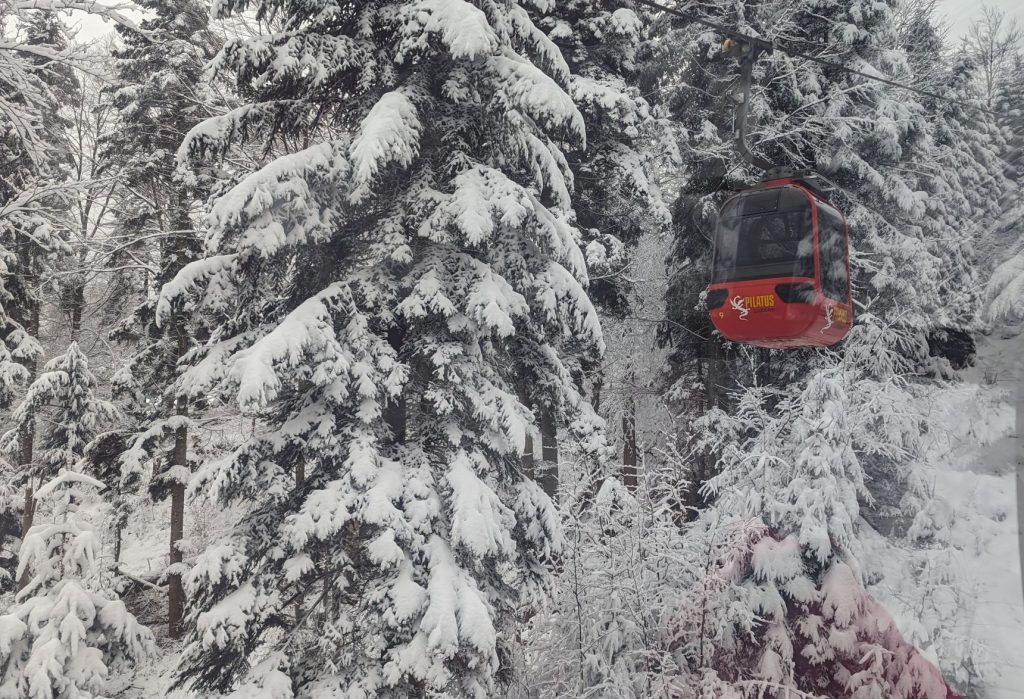
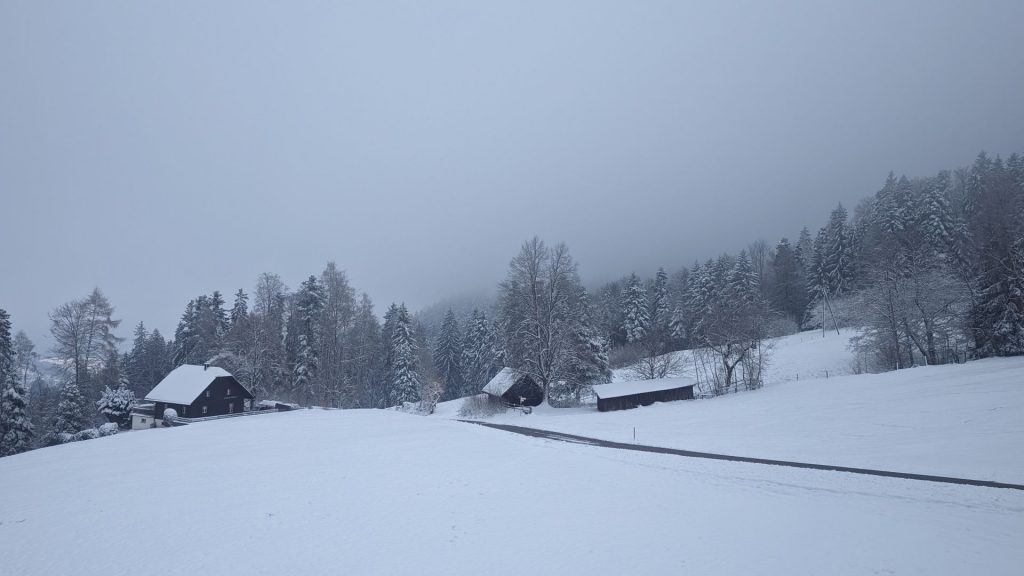
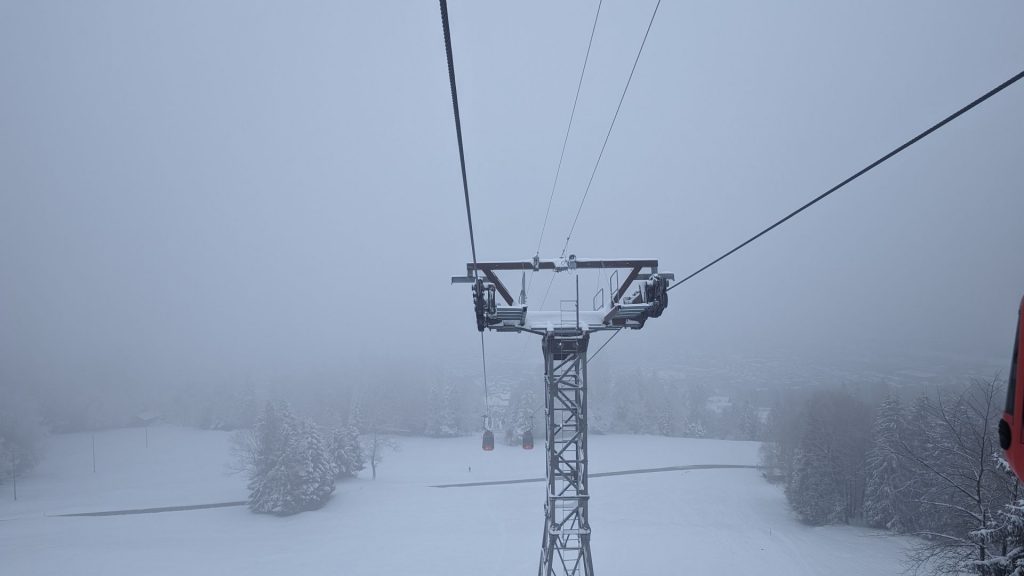
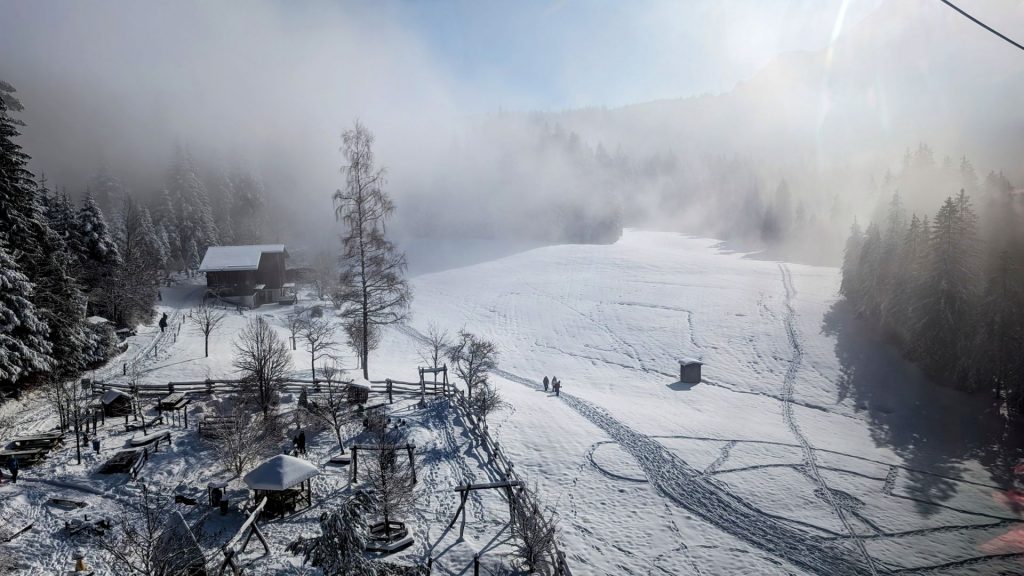
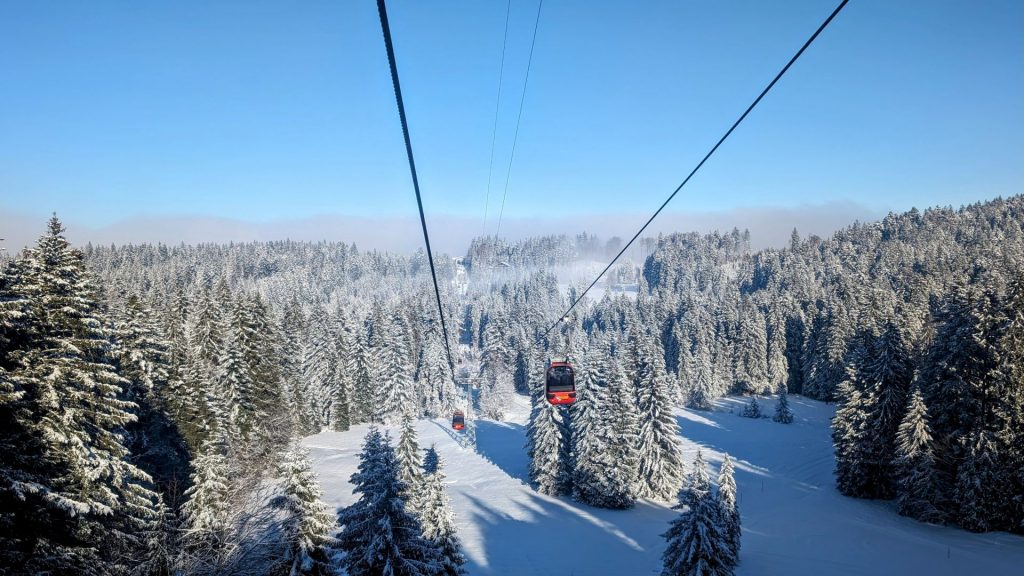
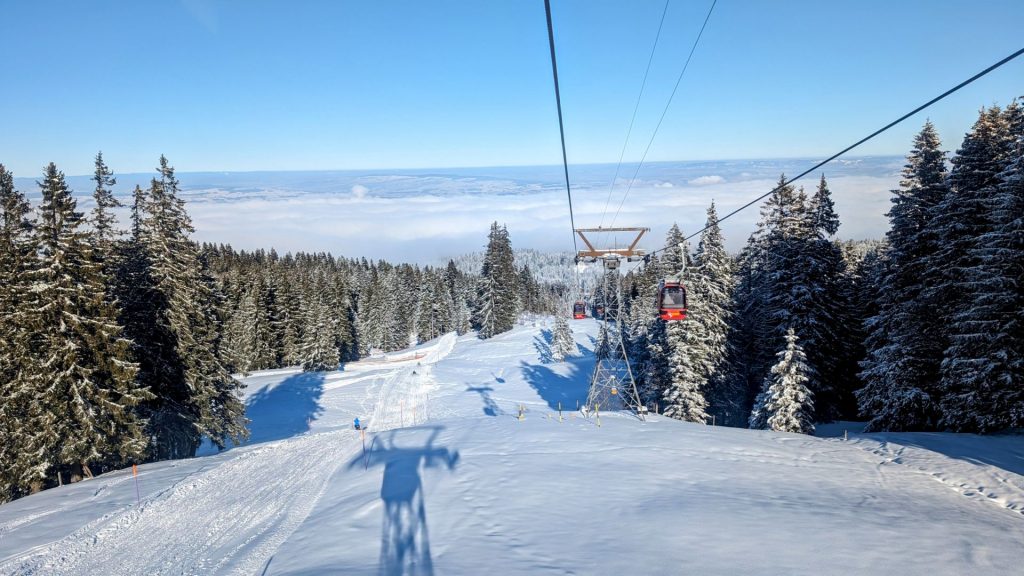
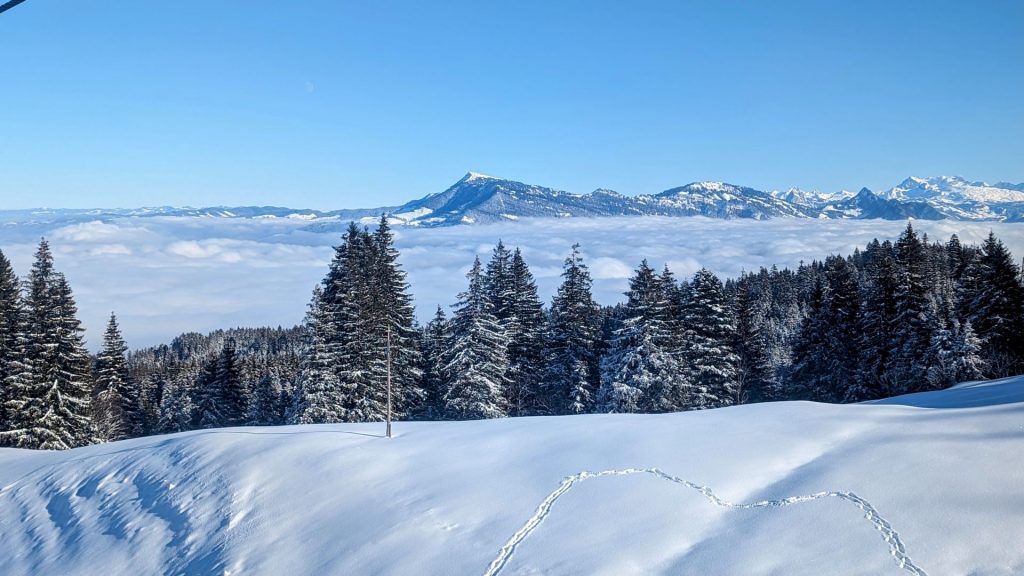
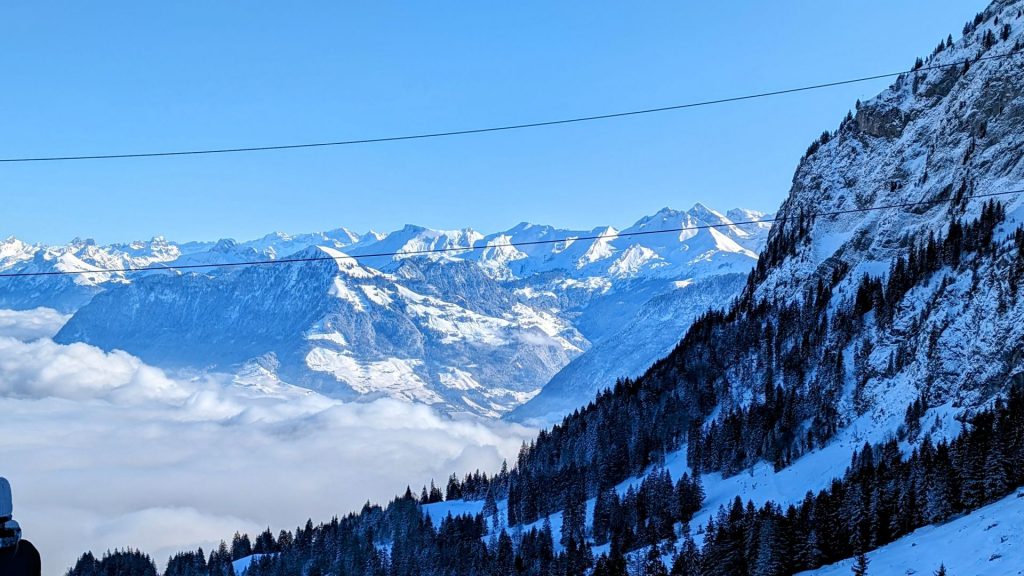
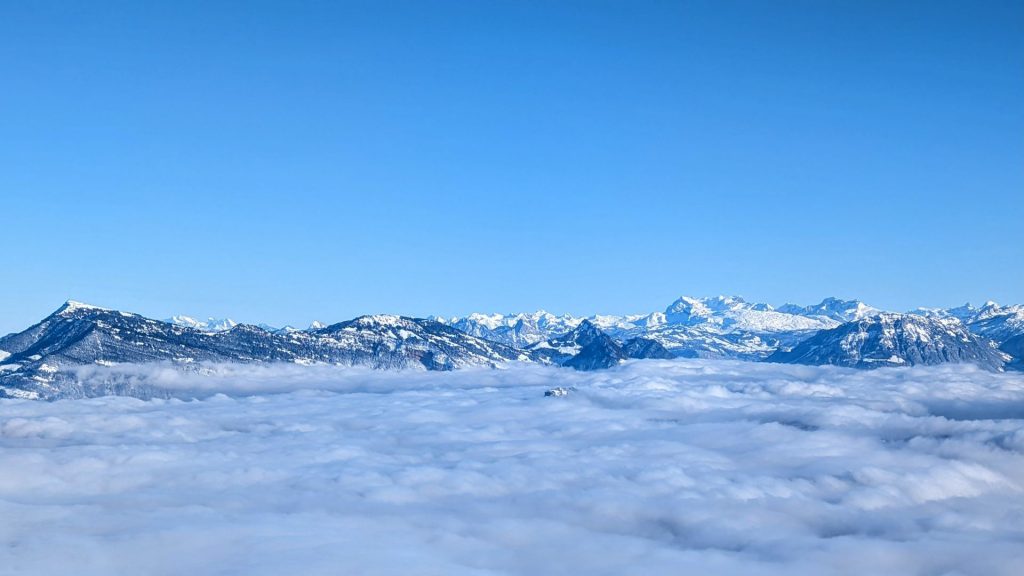
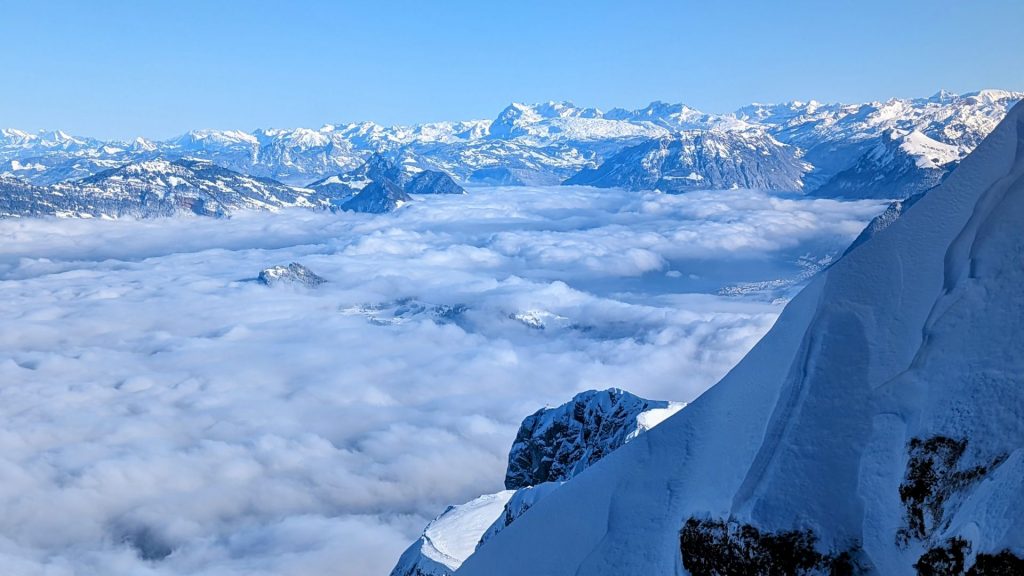
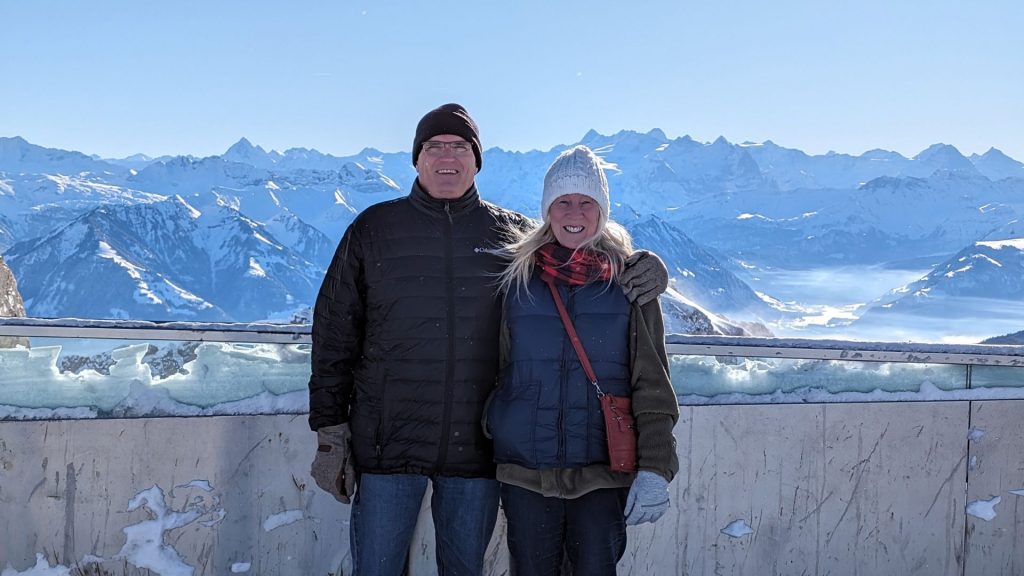
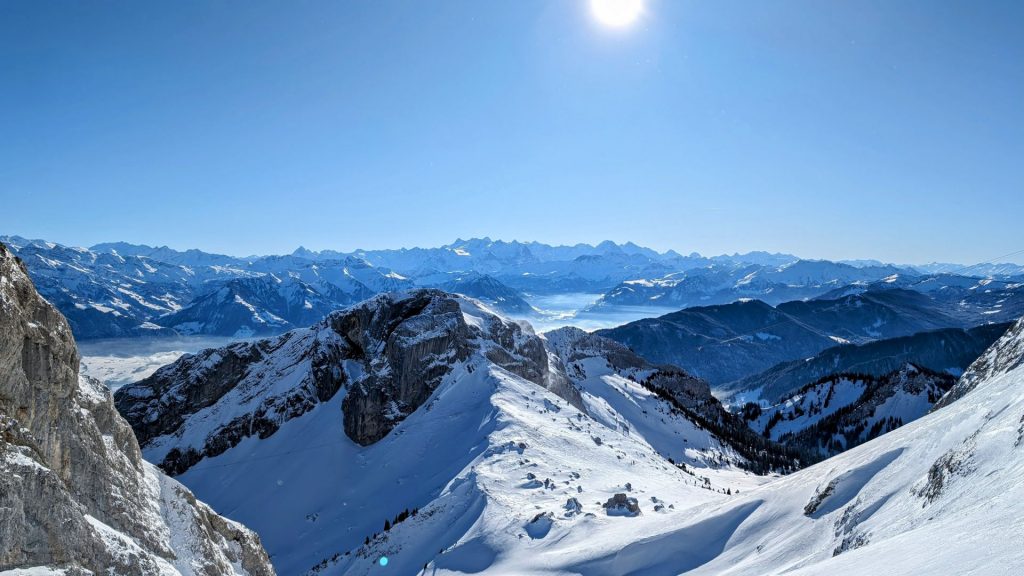
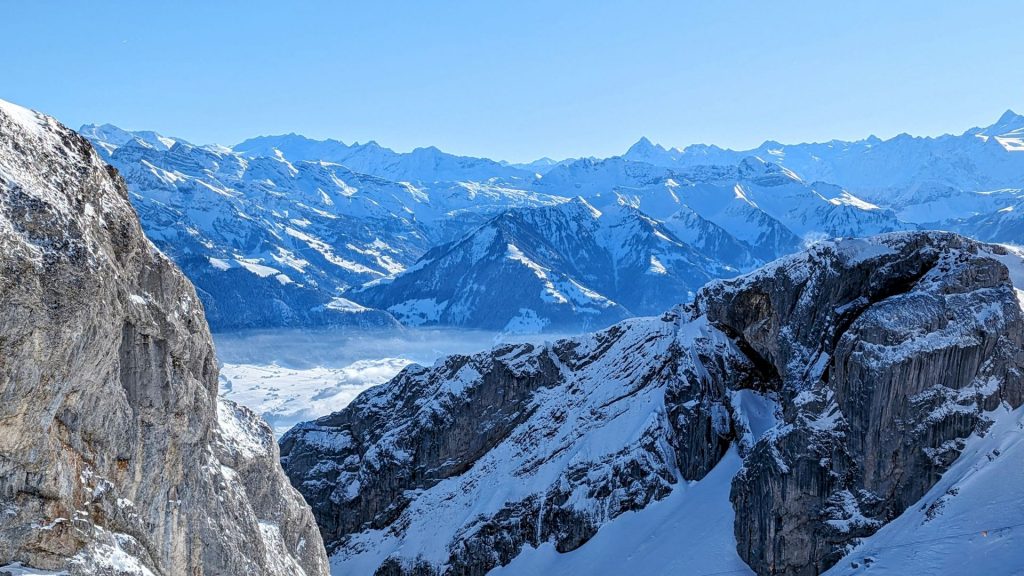
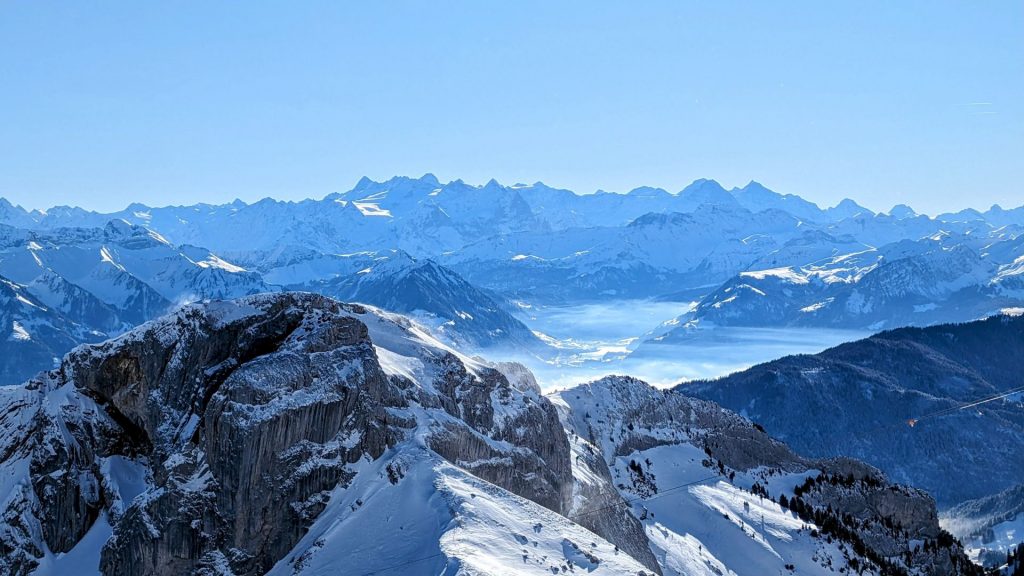
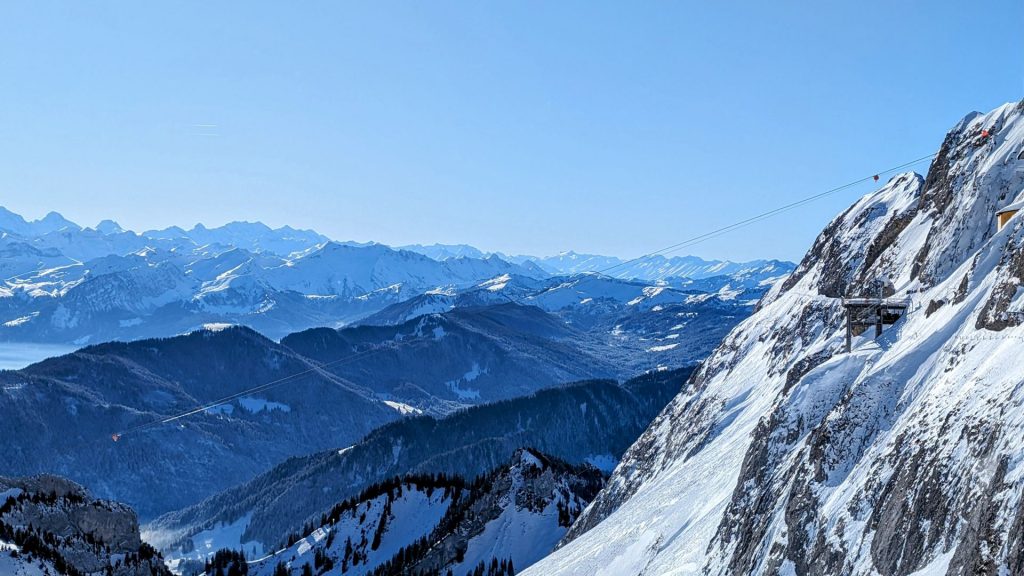
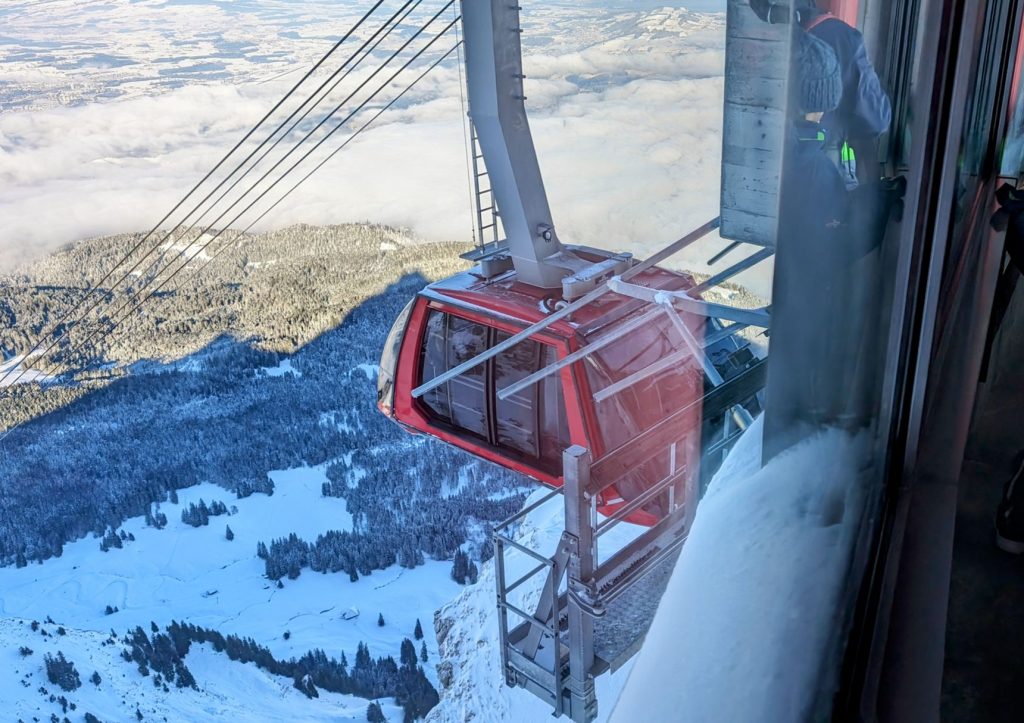
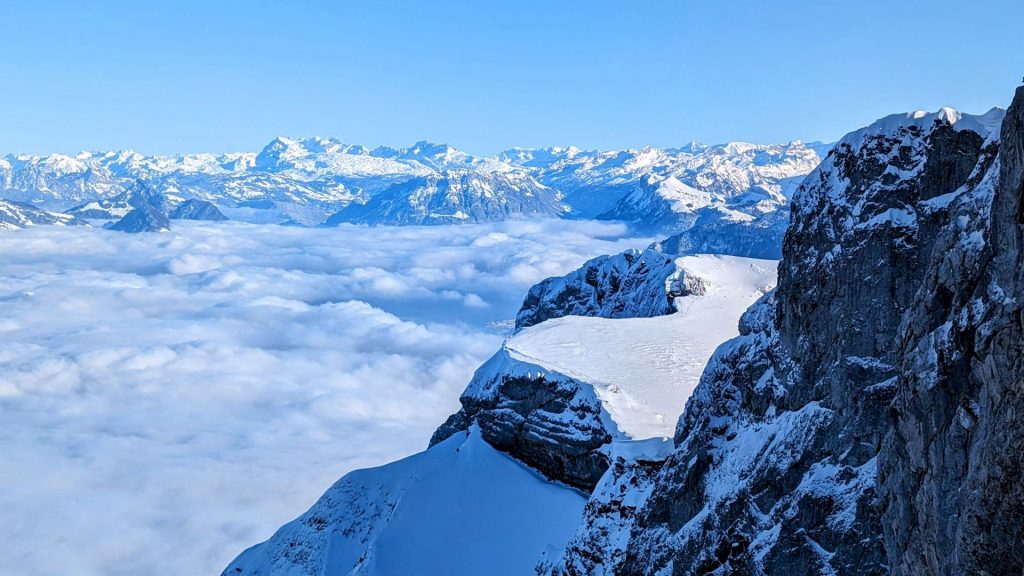
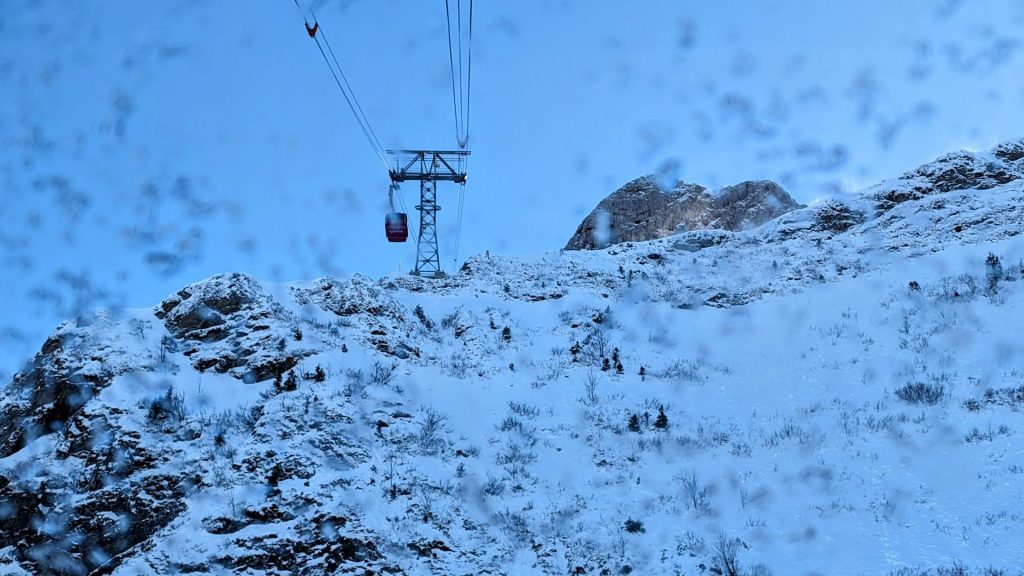
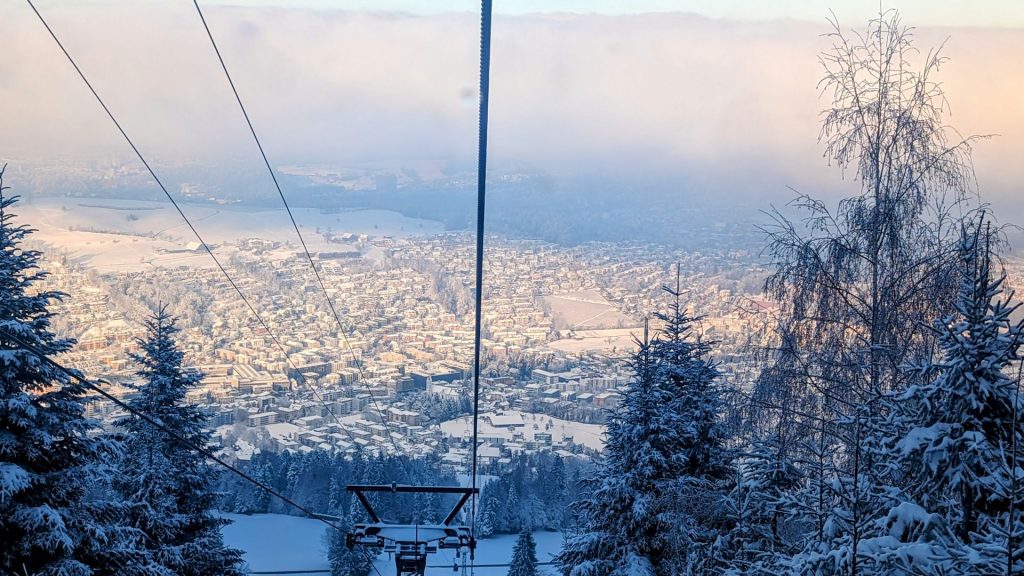
That’s it for today’s post. More of Switzerland in future posts.
